oxy '25 | MAC Major | https://letterboxd.com/zanemeki/
Don't wanna be here? Send us removal request.
Text
A Cultural Studies Analysis on Invincible
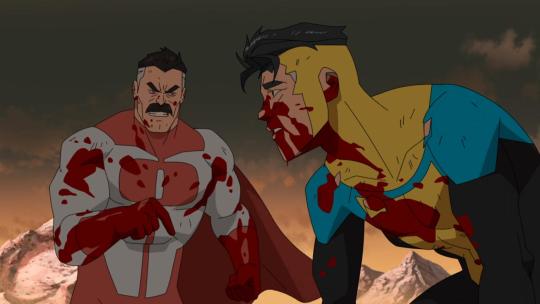
In my video essay, I looked at Prime Video’s Invincible (2021-) and analyzed the various themes of identity that appear throughout the show, all revolving around the main protagonist of the series, 17-year-old Mark Grayson. I pair this up with various Critical Studies sources that cover reception theory and critical race theory and intersect some of the arguments made to highlight cases of othering within the show. As mentioned, the analysis is centered around Mark’s identity as a superhero, as a young adult, and as a half-Human and half-Viltrumite, as he develops his powers and ‘learns the ropes’ of the superhero job.
In regards to his identity as a superhero, I look at how Mark/Invincible is othered in the scope of superhero media through how his origin story diverts the theme of loss and redemption. Stuart Hall’s reception theory delves into the coding and decoding of messages in certain texts.[1] I pair his argument on how instances of codes can be made to appear as though they haven’t been constructed anymore because of how popular or generally used they’ve become in certain communities with Max Horkheimer’s and Theodor W. Adorno’s argument that in the production of mass culture, more specifically in media, the audience can more or less easily predict the structures and narrative elements of the piece.[2] Superhero media is one of the highest-grossing genres currently across both television and film, meaning that audiences have grown accustomed to the stories of the genre. A result of that is a discourse that mirrors the arguments made by Hall, Horkheimer, and Adorno. Fingers have been pointed specifically at large corporations such as Disney, who mass-produce superheroes in a manner that utilizes the same molds and structures repetitively and has greatly influenced superhero media across the Western production world especially. Attempts at creating unique texts in this genre have been made, resulting in the subgenre of ‘capepunk’, a genre that aims to tell more grounded and realistic superhero worlds and critique mainstream superhero media while making use of adult themes and explicit content. This genre has been popularized in recent years thanks to shows like The Boys (2019-) and Invincible, however, arguments have been made that these types of media eventually end up becoming the media that they’re trying to subvert and critique. I acknowledge that Invincible certainly does appear similar to the media it makes critiques on. It’s not convoluted or unique and fits the descriptions of media that Hall, Horkheimer, and Adorno describe. I do argue that it presents several cases in which it can break off from the mold and create new and refreshing cases that are coded.
The instance I look at in-depth is how Mark continuously faces loss and how this plays into his identity as a superhero. Comparing his journey to a common superhero origin story that is presented in most popular instances of the genre, Mark ticks most of the boxes, but one thing he manages to keep doing is losing. And it ends there. He doesn’t have some kind of redemption or resolution within the episode of the season or the next season, Mark will lose a fight and the episode will end there. We move on to whatever conflict he has to face in the following episode. This is an important aspect of Mark’s origin story, as it not only grounds his story but also reflects his ideology and how it changes. As he physically endures countless beatings and is left unconscious multiple times, his belief in what it means to be a superhero is challenged and broken each time. This repeated loss, however, is interpreted negatively in large circles in online forums who have expressed their annoyance at Invincible’s inability to win fights, or even whether he should be able to call himself ‘Invincible’, causing Mark to be othered from his superhero counterparts across the genre. Mark’s case is seen as unique, in some respects, an early failure in the image of a superhero. I believe this perspective is evidence of being unable to decode the message of the creators on the constant battle that Mark endures in his belief system, which is also symbolized by the title sequence of the show. The “INVINCIBLE” title card is splattered with more blood each episode of the first season, mirroring the repeated damage that Mark endures, while in the second season, the title card is completely covered in blood and begins to crack. The cracks grow in each episode, revealing a new layer underneath.
I bring up how this is made more clear in the second season, more specifically in the mid-finale, and present clips and narration on a case where Mark’s ideology takes a drastic shift. The entire premise of learning to fight with the mentality of killing the opponent creates an opportunity where Mark can go toe to toe with his opponent, yet this ideology conflicts with his identity as a superhero, and this conflict causes him to ultimately lose the fight. This ideology is not only tied into Mark’s identity as a superhero, as additionally, it is also his racial identity. As mentioned in the video, the Viltrumite alien race is coded with the definitions of colonialism, imperialism, and racism that Robert Stam and Louise Spence present.[3] They use their superhuman abilities to kill and conquer different alien races across the galaxy. Mark, the only Viltrumite in the entire galaxy that opposes this idea and seeks to protect his Earth, is othered by other Viltrumites. Interestingly enough, physically and biologically, Mark is a Viltrumite, but they are completely indistinguishable from humans apart from the supernatural abilities they possess and their prolonged life spans. Mark seeks to other himself as much as possible from the Viltrumites. This is symbolized by his superhero outfit that sports a color scheme of yellow, blue, and black and has a unique design, which is completely different from the white and grey uniforms that Viltrumites wear, depicting the uniformity of military garments. Mark’s father, Omni-Man, wears a unique combination of the base of the Viltrumite uniform with a human superhero design on it, symbolizing how he is caught in between these two worlds which is explored more in the second season of the show.
Mark steers away from conforming to Viltrumite ideologies and fights and prepares to save or liberate Earth (and potentially the galaxy) from Viltrumite's influence. I mention how his Asian identity fits the mold of Stam and Spence’s argument on naive integrationism, as the creators substitute an Asian character into a role dominantly played by white characters and never truly explore his Asian identity, however, I argue that Mark’s role as an active opposer of the coded ideologies Viltrumites embody, and therefore doesn’t play Stam and Spence’s argument.[4]
Invincible creates a unique plot in a medium that is saturated with the elements that the show subverts. Mark embodies roles that while othering him from his counterparts both beyond and within the scope of the show, present the case for an unlikely superhero who may be able to surpass those around him. Especially when he’s able to win his first major fight.
[1]Stuart Hall, “Encoding, Decoding,” 551
[2]Max Horkheimer, Theodor W. Adorno, “The Culture Industry: Enlightenment as Mass Deception,” 98-99
[3]Robert Stam, Louise Spence, “Colonialism, Racism and Representation: An Introduction,” 753
[4] Stam, Spence, “Colonialism, Racism and Representation: An Introduction,” 757
@theuncannyprofessoro
7 notes
·
View notes
Text
What is the general reception by the public to Supergirl?
Roundtable Presentation: We Don't Need Another Superhero
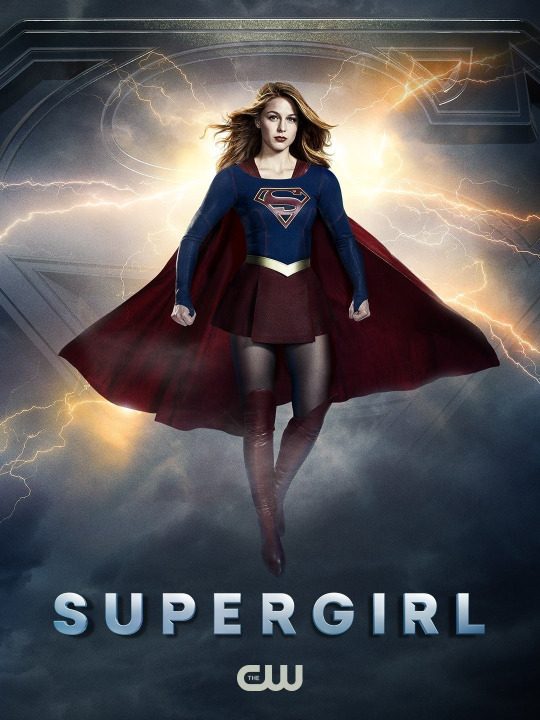
How do structural mythology, cultural studies, and cultural history reflect the series’ world and world-building around superheroes?
Supergirl’s true identity is Kara Zor-El, with her earth name being Kara Danvers. The show takes place in National City, and besides this world’s advanced technology and interaction with the extraterrestrial, it reflects a world much like ours. The politics of this world is similar in the sense that there are “anti-alien” political groups that lead the aliens of this world to find refuge in their own bars, neighborhoods, etc. In fact, Kara’s best friend, Lena Luthor, develops a piece of technology meant to identify who in a crowd is alien and who is not, a severe form of othering.
In what ways are the superheroes and their abilities informed by their racial, gender, sexual, and cultural identities?
One of the main challenges for Supergirl is coming to terms with her identity and finding space for herself in a world dominated by male superheroes, specifically her cousin, Superman (aka Clark Kent). During the destruction of their planet, a teenage Kara is sent to earth to protect baby Clark. However, Kara arrives on earth much later than Superman because she ended up trapped in the Phantom Zone, a dimension of space where time doesn’t exist. Thus, although Kara is older, Clark is already an adult while Kara is growing up with her adoptive family. In a world where a male superhero with identical powers is established, Supergirl has to work twice as hard to make sure she isn’t just known as “Superman’s cousin.”
Another way Supergirl is informed by her gender is through her interaction with other male characters. Most Superman narratives don’t typically focus on Superman’s love interest, and even if it does, it rarely has a large enough focus to affect the trajectory of Superman’s abilities. Contrastingly, the TV show Supergirl is packed with “damsel in distress” storyarcs, where she is often saved by one of her love interests. This is interesting considering one of the main themes of the show is feminism.
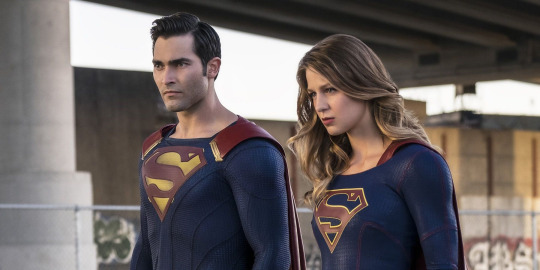
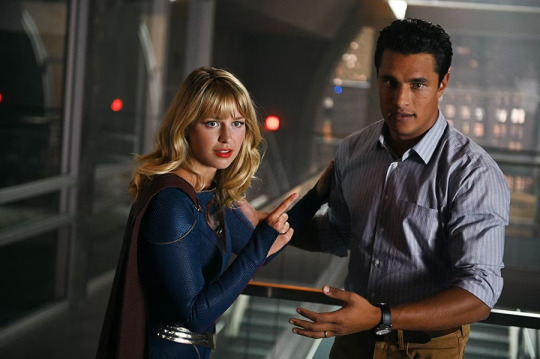
In what ways do costumes and concealing identities further separate the superheroes from normal society? How necessary is it for the superheroes to hide their true identities to successfully achieve their goals?
Supergirl's costume separates her completely from her actual identity, Kara Danvers. The importance of the costume especially comes to light when she is interacting with her boss, Cat Grant, and her best friend, Lena Luthor. Both characters have very different attitudes when it comes to Supergirl versus Kara. Cat Grant idolizes Supergirl and aims to secure interviews with her for her magazine while treating Kara, her assistant, with little acknowledgement and appreciation. Lena Luthor, who begins as friends with both of Supergirl’s identities, becomes both vengeful and terrified of Supergirl and strains their relationship even further by developing anti-alien technology that could dampen Supergirl’s abilities. As for her relationship with Kara, the two are the bestest of friends until Kara reveals her superhero identity to Lena, leading to an extreme loss of trust between the two. For Supergirl, it’s extremely important for her to maintain a hidden identity so that her complex work relationships do not get mixed up with her personal ones.
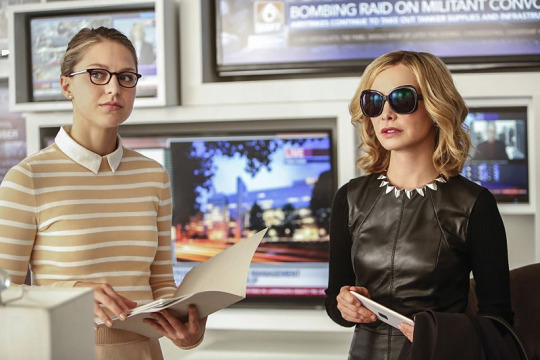
How do the economic, political, and social events that occurred during the series’ creation and broadcast cultivate and inform the superheroes’ decisions and actions?
Supergirl aired in 2015, and in 2016, the election between Donald Trump and Hillary Clinton was the topic of the year. Thus, I don’t think it’s a coincidence that season two of Supergirl had more episodes surrounding the president than any other season. The President in the world of this series was a woman named Olivia Marsdin. However, one of the biggest shocks of the entire series was in the season four premiere, where The President was revealed to be a shapeshifting alien herself. This is especially interesting considering Trump’s stance on immigration during this time. In the world of Supergirl, this revelation threw the public into utter chaos and shock, especially because of the anti-alien sympathizers spread throughout the country. Although the President shows no immediate threat and has been running the country with its inhabitants best interests at heart, both human and alien, the Constitution leaves no room for the President to not be a natural-born citizen, let alone an extraterrestrial. The revelation tarnished the image of aliens all over the country, including Supergirl, and anti-alien extremist groups gained even more support, with one of the leaders, Agent Liberty, becoming the primary antagonist of the season.
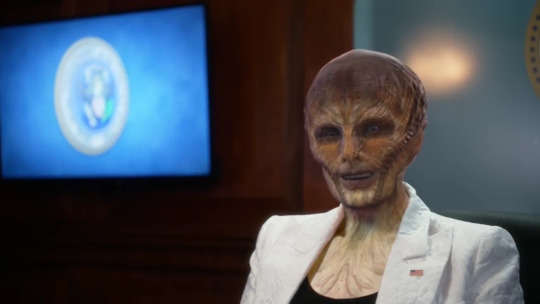
How do the superheroes question themselves, each other, and their obligations and duties to the people around them?
Because she has to keep her identities separate, Supergirl often has to hide parts of herself from the people closest to her. Thus, when she’s able to share her full self with someone, it takes an extra emotional toll on her to lose them. During an invasion, Supergirl has to choose between saving the people of Earth from becoming mindless drones or losing the love of her life, Mon-El. Ultimately, she of course chooses to save Earth, but there is a moment where Supergirl questions whether all she has sacrificed for this world both physically and emotionally is worth it or not.

@theuncannyprofessoro
12 notes
·
View notes
Text
Are super-powered people forced to work as agents or can they also operate on their own accord?
Moving (2023) Roundtable

Moving (2023) is a Korean Drama show where certain people have superpowers. The protagonist, Kim Bong-seok, is a highschooler who has the ability to levitate, along with all of his senses being greatly increased. The heroine, Jang Hee-soo, has the power to regenerate. We learn over the course of the show that their parents also had the same abilities as them and were special agents for Korea, going on various missions for the country.
How do structural mythology, cultural studies, and cultural history reflect the series’ world and world-building around superheroes?
Cultural studies and history greatly alter the world-building, as the superheroes in the series have to hide their identities. Many with powers work as agents, going on special missions for their country. Any media that potentially leaks information on the existence of people possessing superpowers is immediately deleted from the web. Agents with powers must have codenames and need to keep their true identities hidden from the general public.
In what ways are the superheroes and their abilities informed by their racial, gender, sexual, and cultural identities?
Lee Mi-hyun, the mother of the protagonist Kim Bong-seok, is greatly affected by her gender. She is a retired agent who is the only woman to participate in a black ops mission. However, after losing much of her eyesight, she is forced to become an information analyst. Here, she is given the job of becoming close with another black ops agent in order to get information out of him. She is only chosen for the job because of her looks. Within this agency, it is clear that men are chosen for on field work while women are not.
In what ways do costumes and concealing identities further separate the superheroes from normal society? How necessary is it for the superheroes to hide their true identities to successfully achieve their goals?
It is necessary for the superheroes to conceal their identities because if revealed, they can be targeted by other agents from rival countries. An agent named Frank is given a mission by the US to track down and kill retired Korean agents, and he succeeds in eliminating quite a few. Blending into normal society and keeping their identities and powers hidden is an important part of the job for each of the agents.
How do the economic, political, and social events that occurred during the series’ creation and broadcast cultivate and inform the superheroes’ decisions and actions?
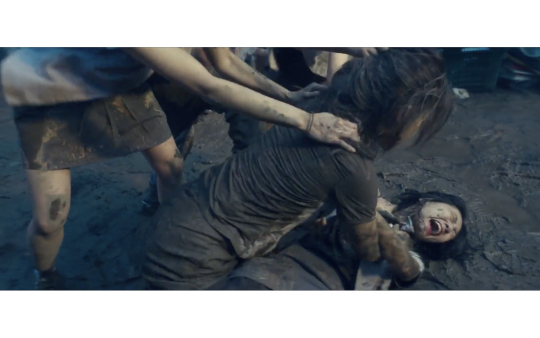
The backstory of the heroin, Jang Hee-soo, is revealed partway through the show. It is shown that she makes the decision at her old school to fight a group of bullies, seventeen in all. Because of her ability to regenerate, she leaves the fight without a scratch. There is an interesting dichotomy between her character and the US agent Frank, who also has the ability to regenerate. However, Frank is like a machine, a man who grew up in Iowa and has no motive but to complete missions. While Hee-Soo fights bullies, Frank is often the bully. Yet we see how similar the two characters actually are, as both are seen choking one of their enemies in their backstory. Frank having no concept of family is shown throughout his character arc, signaling that his fate would have been different with a better upbringing.

How do the superheroes question themselves, each other, and their obligations and duties to the people around them?
The protagonist, Kim Bong-seok, is forced to wear weights on his ankles and carry a heavy backpack to avoid levitating in front of other people. This decision is made by his mother, who is very overprotective. We learn later on that his mother acts this way because of the death of the father, who also had the ability to levitate. Because his mother is overprotective and at times very controlling, Bong-seok grows up very submissive. There is a moment in which he confesses that he does not like himself as a person and wants to change. Had he not been given powers, his character and personality would probably be much different.
youtube
#oxyspeculativetv @theuncannyprofessoro
12 notes
·
View notes
Text
Current ongoing superhero show, Invincible (2021), pays homage to Wordgirl's final fight that aired in 2015 by having its most popular fight sequence mirror the fight Wordgirl has. Do you think Wordgirl has an influence on the current age of superheroes?
Superheroes Roundtable: Wordgirl

How do structural mythology, cultural studies, and cultural history reflect the series’ world and world-building around superheroes?
Wordgirl (PBS) represents a cultural shift towards the prioritization and valuing of literacy and education for young girls. When the show premiered in 2007, there were not many kids' superhero shows that featured female protagonists. This issue still persists today in both child and adult media. Not only does Wordgirl feature a young female protagonist, but her superpowers subvert traditional expectations of violence and fighting. To platform spelling and literacy as “powers” is to highlight the value of these abilities in our society.
In what ways are the superheroes and their abilities informed by their racial, gender, sexual, and cultural identities?
It is interesting to consider this question in relation to Wordgirl’s character because while her gender is platformed and even included in the name of the series, her racial identity is purposefully abstracted and blurred. While Wordgirl is technically from the planet Lexicon, and thus is not affiliated with any known race or ethnicity, she has light brown skin and thus could arguably resemble/represent multiple different races. As a young woman of color, usually facing off against male-presenting adversaries, her identity never hinders her ability to defeat her enemies with her impressive vocabulary.
In what ways do costumes and concealing identities further separate the superheroes from normal society? How necessary is it for the superheroes to hide their true identities to successfully achieve their goals?
While I think in traditional superhero narratives, concealing identity is very necessary in ensuring the safety of the character in their day to day lives, I would argue that Wordgirl plays off of this trope and even satirizes it. Her disguise is a cape and a mask that covers just her eyes, and most of her enemies interact with her regularly when she is not in her superhero costume. It is very clear who her real identity is, however the show has her wear the cape and mask to call attention to these tropes and solidify its place as a less serious yet no less important superhero text.
How do the economic, political, and social events that occurred during the series’ creation and broadcast cultivate and inform the superheroes’ decisions and actions?
Besides the political relevancy discussed in question #1, individual epsidoes of the show sometimes mirror socio-political events. For example, an episode aired in 2009 in which one of Wordgirl’s recurring enemies, Toby, runs for president. Given that the episode aired the year following the 2008 presidential election, it is clear that the showmakers sometimes wanted to feature topics that were especially culturally and politically relevant.
How do the superheroes question themselves, each other, and their obligations and duties to the people around them?
The show picks up after Wordgirl has already decided that she wants to use her powers to save people and catch criminals. Because she is self assured and confident in her role and the way to harness her powers for good, an internal struggle surrounding her obligations does not have a place in the show. She fights crime and teaches villains how to spell not out of obligation but out of a desire to do so, which I think is a valuable type of empowerment to show in a series for kids.
@theuncannyprofessoro
17 notes
·
View notes
Text
Do you think the premise of having such a young superhero presents some of the typical superhero topics better than the currently popular genre of older-audience-based, gory superhero shows?
Raising Dion

Raising Dion is a superhero show that premiered on Netflix in 2019. The show follows recently widowed mother, Nicole, and her son Dion who starts at a new school. They are under the impression that her husband and Dion’s dad, Mark, had drowned, although his body was never found. The conflicts that arise as Nicole raises Dion on her own are heightened when Dion begins to manifest several superhero-like abilities. Some of these include: telekinesis, flight, teleportation, healing, and invisibility. Nicole works to keep Dion’s powers a secret out of fear for his safety. With the help of Mark’s best friend, Pat, the two work to help Dion channel and control his powers, while they work to figure out where his powers came from. The main villain is called “Crooked Man,” and appears as more of a large outline/entity rather than a human. The Crooked Man seems to be brought together by energy, appearing as a large figure made out of lightning.
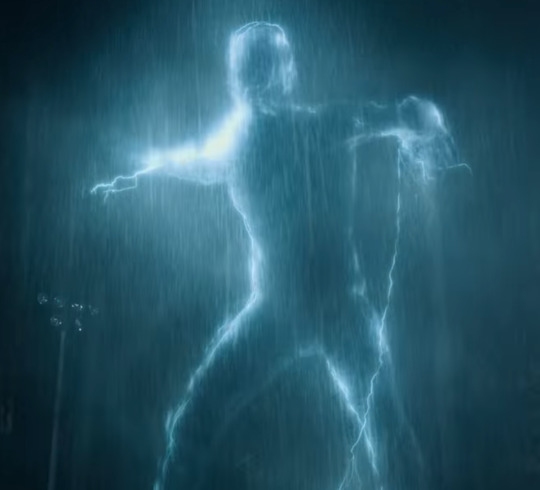
How do structural mythology, cultural studies, and cultural history reflect the series’ world and world-building around superheroes?
The show embodies the basic structural mythology of superhero shows. This includes Dion uncovering his powers in a dramatic and unexpected scene with his mom in their home. Following this there is his initial call to adventure as he learns to control his powers while facing the challenges of the Crooked Man who wants to kill Dion in order to gain his power. He experiences the known trope of a mentor, in this case, his late father’s best friend Pat. Although it seems that Pat does not have powers himself, he works to understand Dion’s abilities and attempt to uncover where they may have come from. In addition to Pat, Nicole tracks down a woman named Charlotte Tuck, who also has powers like Dion’s, in order to help him learn. Throughout the season, Dion becomes more powerful and more equipped to fight the Crooked Man. The series is made up of a very diverse cast and the director, Dennis Liu, has spoken about his desire to allow minority populations to see themselves depicted as the ultimate superheroes on television. The show explores non-traditional family structures, such as single-parent households and families with extraordinary abilities. This can be examined in the context of societal norms and how the show both reflects and challenges these norms. The series is set in contemporary times, and events in the story are influenced by the cultural and technological context of the present day. I feel that this is best exemplified throughout the second season, with more emphasis on BIONA, which was the organization that Dion’s father worked as a scientist for. BIONA is a research institute that studies climate and climate change.
In what ways are the superheroes and their abilities informed by their racial, gender, sexual, and cultural identities?

The series, and Dion in particular, are informed by racial identities in many ways. As a young Black boy, a number of his experiences are influenced by his race and the stereotypical ideology that surrounds the Black race. This is exemplified in season one, episode three: “Watch Man.” Dion has begun wearing a watch that belonged to his dad. Despite previously having issues controlling his powers, Nicole makes him believe that it will help him channel his abilities more effectively. In this episode, Dion is talking to his friend Esperanza about his watch. When she suggests they use it for a project, Dion explains that it is just for him. A bully in his class overhears this and later convinces Dion to give it to him for a magic trick. When the boy will not return the watch, Dion becomes frustrated and accidentally throws him against a wall with his mind. When the principal brings the boys to his office, he gives Dion a two day suspension and does not punish the other boy. Dion is a young Black boy and the bully and principal are white. This scene highlights the racial prejudice that the principal uses to inform his discipline. This scene prompts Nicole to have a conversation with Dion about his skin color and how this affects situations he may be in and why the principal did not punish the bully. The series shows gender identity most clearly through Nicole. Despite her not having literal superpowers, she is shown to be a strong, independent single mother who faces Dion’s upbringing head on and works to keep him safe and provide the best life she can possibly give him.
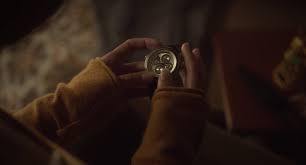
In what ways do costumes and concealing identities further separate the superheroes from normal society? How necessary is it for the superheroes to hide their true identities to successfully achieve their goals?
Most commonly, in superhero shows, costumes allow individuals to conceal their identities, although most of the time not very effectively. In Raising Dion, his superhero costume strays from this typical portrayal. As a seven year old boy, his imagination is a stronger tool in regard to his superhero powers. He does not have a high-tech suit, but a red shirt with the initials MM on it, alluding to his nickname “mind mover.” He also sports a pair of goggles throughout the show. I would say that although not being a costume, the large watch that Dion wears serves as an object that gives him confidence in his abilities, and is something that he feels gives him unique power. In terms of concealing his identity, again as a young boy who is still attempting to live his everyday life, it is rather that the adults in his life have instructed him so clearly to conceal his powers themselves, that he is not often needing to conceal his identity in public. Season one of the show in particular focuses on him honing his powers and uncovering the root of them, rather than him saving individuals in the city whenever they are in minor danger, like Superman for example.
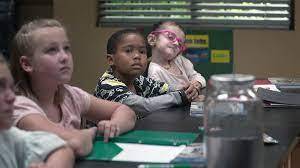
How do the economic, political, and social events that occurred during the series’ creation and broadcast cultivate and inform the superheroes’ decisions and actions?
The series deals with racial discrimination, specifically the scene with the principal that I discussed above. Discrimination and prejudice against the Black population remains extremely prevalent, and seeing the scene where an adult projects this ideology onto young students, instead of hearing what Dion has to say, alludes to a greater number of instances. This includes police brutality, specifically assaults and murders that have occurred as a result of this white supremacy. In addition to this, there is a particular instance where Dion learns about ableism. His friend Esperanza has brittle bone disease, which forces her to remain in her wheelchair at all times. Dion takes her into a classroom in season one, episode eight, lifting her out of her wheelchair with his power, making her fly. He does not explain what he is doing and his act is met with discomfort, asking him to put her down and questioning why he would do that. He explains that he thought she would have wanted to walk and that everyone wants to fly. Esperanza leaves the room without saying anything, leaving Dion confused. After school, he asks Charlotte Tuck why she was so upset, and Charlotte asks Dion if he really knows anything about why she is in the wheelchair, or if she has ever walked before. This aids him in making better and more respectful decisions while using his powers with his friends.

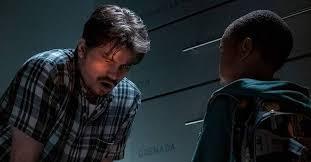
How do the superheroes question themselves, each other, and their obligations and duties to the people around them?
This has been the case for most of these questions, but I think that because Dion is such a young superhero, he is not the one to fully understand the weight of his abilities and why that makes him a target for villains. We see him questioning his actions when he makes mistakes with his power and when his emotions are heightened. However, I think it is the adults that we see in the show, Nicole, Pat, Charlotte, and his aunt, Kat, that do the most questioning. They are mature and able to see the effects of the power that Dion has, and to understand why this must be concealed for his greater good. This weighs most heavily on Nicole. As a single mother, she must deal with keeping Dion safe as well as keeping him happy. When he first discovers his powers, she keeps him out of school while they work on controlling them. Eventually, he asks her if he can go back to school and she must deal with the potential danger that this may cause while also understanding that it is what her child wants to do, just like all of the other kids.
#oxyspeculativetv
@theuncannyprofessoro
11 notes
·
View notes
Text
Do you think the positives of having a systematic approach to superheroism outweigh the negatives that the show exhibits?
Roundtable Presentation: My Hero Academia

How do structural mythology, cultural studies, and cultural history reflect the series’ world and world-building around superheroes?
My Hero Academia draws heavy influence from Western Superhero comics. The character designs themselves as well as the hero society that is built up reflects a lot of aspects specifically shown in Marvel and DC. My Hero also takes the classic Hero’s Journey mythology concept and portrays this the the main character Izuku Midoriya. He goes from being quirkiness, to inheriting one the most powerful quirks and becoming a hero.
In what ways are the superheroes and their abilities informed by their racial, gender, sexual, and cultural identities?
In My Hero Academia, the characters manifest quirks in a way that is usually completely unique to them. A lot of the times, quirks are influenced by genetic factors with characters usually manifesting a quirk that is similar to a combination of their parents quirk. They are similar to how certain traits are inherited in the real world. A lot of diversity is also shown through the costumes that heroes design for themselves. These designs can incorporate different cultural or personal elements that allow for characters to better express their individuality. for the most part quirks are not determined by racial identity, gender and sexuality.

In what ways do costumes and concealing identities further separate the superheroes from normal society? How necessary is it for the superheroes to hide their true identities to successfully achieve their goals?
In My Hero Academia, there is a whole society of heroes. It takes place in a world where 80% of humans suddenly begin to develop superpowers. Heroes are separated from society in the sense that they are looked up to and depended on by many people with weaker quirks. Being a hero is oftentimes a job that is sought after, with whole schools dedicated to teaching young students to be good heroes. Finding the right costume is important for every heroes journey, usually made to enhance their specific quirk and be recognizable and marketable. It’s not necessary for professional heroes to hide their true identities. Most of the time, being a hero is something to show off especially if you are ranked in the top ten. However, heroes do have a separation when they are on the job vs when they are off. I’ve noticed a trend in the show where older, more established heroes turn on a heroic personality when they are on the job but are completely different in their personal life.
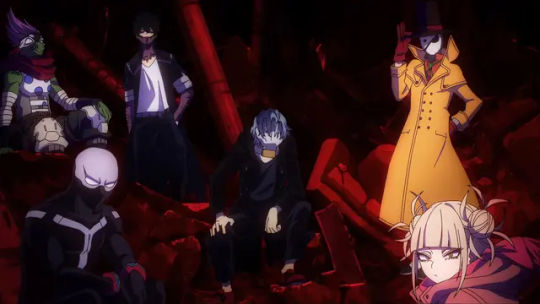
How do the economic, political, and social events that occurred during the series’ creation and broadcast cultivate and inform the superheroes’ decisions and actions?
The emergence of Quirks in the My Hero Academia has social implications especially highlighted in the discrimination and prejudice against those with "villainous" or "unusual" Quirks. This mirrors societal attitudes toward individuals who are perceived as different or other. While the show is not heavily influenced by real life events, a lot of the characters are based on or inspired by classic comic book characters and manga characters.
How do the superheroes question themselves, each other, and their obligations and duties to the people around them?
Many of the older heroes in the show often question themselves and their motives. A few seasons into the show, the viewers start to see that heroes aren’t always good and the hero society is responsible for forcing people into the role as villains. There is also an arc of the show where its’ hard for the characters to trust each other because of double crossing and undercover work. The younger heroes in training seem to have a more optimistic view on being a hero because they are new to the business. Because being a hero isn’t some big secret, those with strong quirks and hero training can jump into action at any point with no worries about being caught.

@theuncannyprofessoro
13 notes
·
View notes
Text
Do general discussion circles of the show sympathize with the Monarch and their ideologies?
The Venture Bros.
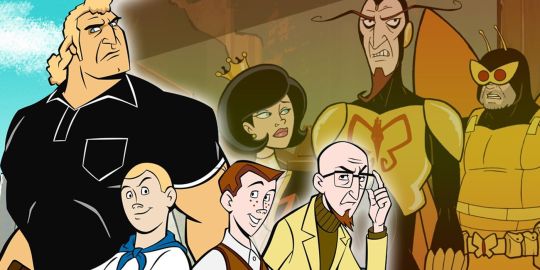
The Venture Bros. takes many assumptions from the Golden and Silver Age of comics and comments on them. It parodies certain elements of comic book history, including ‘the boy adventurer’ (Jonny Quest) trope and space-age fiction themes and aesthetics. The series follows Dr. Thaddeus “Rusty” Venture, a sad failure of a Super Scientist living in the shadow of his late larger-than-life father, Dr. Jonas Venture. Rusty is a superhero in title but not in practice, yet he still has a rotating cast of villains and sidekicks around him. His arch nemesis is a villain called The Monarch, who I focus on for this piece. I think Rusty represents the more cynical, morally ambiguous Silver age of comics while his father represents the authoritarian Golden age, to put it into Williams’ framework from “(R)Evolution of the Television Superhero”. The Venture Bros contributes to a misanthropic view of superhero narratives. All of the characters have major flaws directly connected to their association with Super Heroism and its flipside, Super Villainy. Changes in values over time are shown in the narrative through flashbacks and convoluted storylines involving many characters over several seasons. Overall, though, the series pokes fun and levies criticism against prevalent superhero notions.
The Monarch, Dr. Venture’s Arch Nemesis, is a scrawny, goateed, middle-aged white male who has made a career out of being evil. In some ways, he is very successful, with an awesome spaceship headquarters, a team of devoted henchmen, and a sexy villainess girlfriend. However, the Monarch is shown to oscillate between overconfident and insecure, as seeking validation, and as unable to thwart his self-proclaimed nemesis, no matter how many opportunities he gets.

The Monarch represents an attitude of dissatisfaction among men who actually have quite a bit going for them. I feel like this reflects a culture of misplaced victimhood held by some men as the liberation of women and other oppressed groups makes them feel like they are losing some kind of power or status.
The Venture Bros. is all about funny costumes and character design. The Monarch has leaned all the way into his butterfly-and-insect-themed villainy. His costume is an integral part of his character, and he is rarely seen without it.
His voice and mannerisms are enough to make the Monarch recognizable even when he is not in costume, but he derives much of his power from his outfit, the consistent theme of his evil operation, and his flashy technology. The Monarch has a hard time performing villainy when not in costume. In this universe, Villany is a career, and the job requires a uniform.
The show is definitely influenced by 9/11 and the entrance of Gen Xers into the media scene. The show debuted in 2003, when the Cold War Kids (not the band) were finally entering the workforce and the public eye and expressing their feelings and attitudes about social and political realities of the time. The Monarch is an expression of social, economic and political disillusionment that can go in divergent directions and lead to extremism. Venture represents apathy and adherence to established systems, despite their idiocy.
In Season 1 Episode 5 of the Venture Bros., the viewer gets a glimpse into the more neighborly side of superheroes and supervillains as they are introduced to members of The Guild of Calamitous Intent when Venture hosts a yard sale at his compound and invites all the Villains he works against, with the understanding that no harm can come to him because it is not guild-approved and therefore the villains have no legs to stand on in terms of evil. Even so, the Monarch, Dr. Venture’s sworn enemy, wreaks non-approved havok at the yard sale. In search of a suitable bathroom, Monarch and Dr. Girlfriend walk through the compound and see the sad emptiness of Dr. Venture’s life. For a moment it seems the Monarch has a realization about his Villainy and almost gives up “Arching” Dr. Venture, but when the security team gives him a fright, the Monarch vows to destroy Dr. Venture and reconstitute the Nemesis status.
I think this faltering of ideology that the Monarch experiences shows how perceived obligations are subject to change situationally. This applies to foreign relations because attitudes about domestic policy, domestic views on other countries, and also relationships between nations and states are products of history but also are fluid.
@theuncannyprofessoro
21 notes
·
View notes
Text
Why do you think the aesthetic of the show is greatly appreciated in circles that are typically older than the target audience of the show?
The Powerpuff Girls
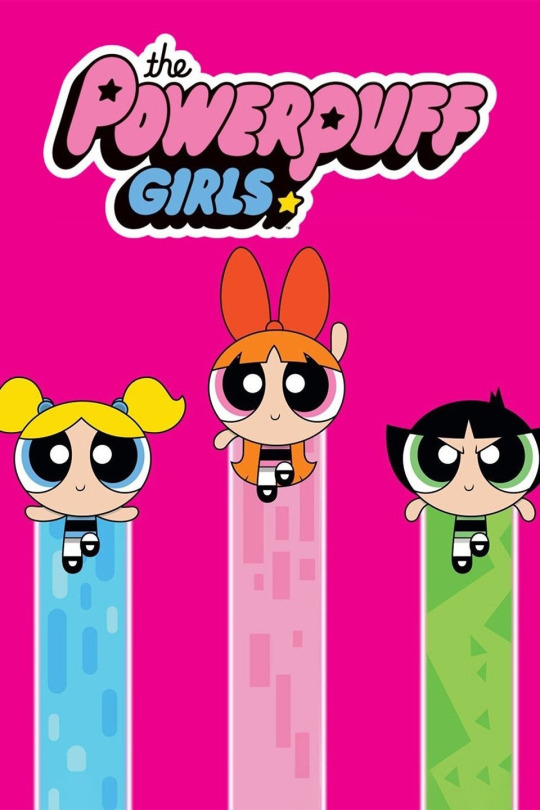
How do structural mythology, cultural studies, and cultural history reflect the series’ world and world-building around superheroes?
The Powerpuff Girls constructs its world through a combination of structural mythology, cultural studies, and cultural history. Structurally, the series adheres to the superhero genre's conventions with the trio of Blossom, Bubbles, and Buttercup representing archetypal hero figures. The cultural studies lens is evident in the show's exploration of diverse characters and themes, challenging traditional gender norms by featuring female protagonists with distinct personalities. Cultural history manifests in the series' context, reflecting the late 1990s and early 2000s ethos, contributing to the development of the Powerpuff Girls' characters, their challenges, and the dynamics within their fictional world.
In what ways are the superheroes and their abilities informed by their racial, gender, sexual, and cultural identities?
The Powerpuff Girls challenges gender norms by portraying the superheroes as three powerful and capable girls, transcending traditional gender roles in the superhero genre. However, the series does not explicitly delve into racial, sexual, or cultural identities. Instead, the characters' abilities and identities are more broadly representative, emphasizing universal themes of empowerment and teamwork, thereby fostering inclusivity. The focus is on their superhero roles rather than specific identity markers, aligning with the series' commitment to a diverse and inclusive narrative.
In what ways do costumes and concealing identities further separate the superheroes from normal society? How necessary is it for the superheroes to hide their true identities to successfully achieve their goals?
Costumes and concealed identities in The Powerpuff Girls serve to separate the superheroes from normal society by creating a distinct superhero persona. Despite their childlike bodies, the girls don't wear masks like the typical superheros, but their costumes signify their superheroic roles. The necessity of hiding their true identities is tied to protecting their personal lives and maintaining a sense of normalcy within the context of their youthful appearances. By concealing their identities, the Powerpuff Girls can navigate both the challenges of superheroism and the mundane aspects of their lives without undue interference or scrutiny. The juxtaposition of their childlike appearance with their superhero responsibilities adds an additional layer of complexity to the need for identity concealment.
How do the economic, political, and social events that occurred during the series’ creation and broadcast cultivate and inform the superheroes’ decisions and actions?
Drawing insights from Kevin D. Williams's article, which explores how superhero narratives reflect societal changes, we can apply this framework to The Powerpuff Girls. The late 1990s and early 2000s, when the series was created and broadcast, were marked by significant cultural shifts. The show aligns with broader societal trends of the time, emphasizing themes of empowerment and diversity, which are likely influenced by the cultural climate of that era. For instance, the late 1990s witnessed a growing awareness of gender equality, and the Powerpuff Girls, as female superheroes, may be seen as a response to or reflection of this cultural shift. The series captures the zeitgeist of the late 20th century and early 21st century, with its characters embodying the values and aspirations of the period.
How do the superheroes question themselves, each other, and their obligations and duties to the people around them?
The series engage in self-reflection and questioning throughout the series. Despite their superpowers, they grapple with typical challenges of growing up, forming their identities, and understanding their roles as superheroes. The dynamics between the sisters involve questioning and occasional conflicts, reflecting the complexities of sibling relationships. The superheroes' obligations and duties to the people around them are generally portrayed positively, with the girls embracing their roles as protectors of their city, but occasional moments of doubt or internal conflict contribute to their character development and the overall narrative.
17 notes
·
View notes
Text
Does the show make any critical commentary on the romantic relationships between specific members of the family?
The Umbrella Academy- We Don't Need More Superheroes

The Umbrella Academy (2019) is a show that follows a group of adopted siblings, each with their own power, and their journey to solve the mystery of their father’s death and save the world from an impending apocalypse.
How do structural mythology, cultural studies, and cultural history reflect the series’ world and world-building around superheroes?
The Umbrella Academy is set in present day (2019) yet plays around with time and timelines throughout the narrative, as one of the siblings Five has the ability to manipulate time. As for structural mythology, the show is based on the books, yet as a viewer who is unfamiliar with the original content, I would say the show is definitely set up in a mystery, as we are introduced to the siblings in the first episode, yet are constantly in the dark when it comes to the reasoning behind the 43 births and what caused it. Though the narrative setup of the death of guardian/father figure, Dr. Reginald Hargreeves, brings the siblings together to mourn his death, Hargreeves is still shrouded in mystery. What is appealing about Umbrella Academy is the diversity of the siblings themselves, and how they go through their own individual experiences dealing with their powers and how they come together to try and stop the impending apocalypse and save the world. As for cultural history, the show does include many significant moments of history, as many scenes take place in the past due to the constant time warping in the show. For example, the Vietnam War, Civil Rights Movement and even the assassination of JFK are all a part of the show, and each siblings’ experiences in the “past” have a direct impact on their own journeys and also their future.
In what ways are the superheroes and their abilities informed by their racial, gender, sexual, and cultural identities?
To my knowledge there is not necessarily connections between the siblings' abilities and their racial/gender/sexual/cultural identities. But, there are definitely ties between each siblings' emotions and their abilities, especially when it comes to sibling 7 Viktor. At the beginning of the series, Viktor is known as the sibling without any powers, and is ridiculed and ignored by Hargreeves as a result. Viktor sees himself as useless compared to his siblings, but it is later revealed that Hargreeves used pills to suppress Viktor's powers of manipulating sound into physical force because he deemed them to be too dangerous. Viktor unlocks these powers after not taking the pills anymore, and releases his full potential, but struggles to control his powers.
In what ways do costumes and concealing identities further separate the superheroes from normal society? How necessary is it for the superheroes to hide their true identities to successfully achieve their goals?
When the Umbrella Academy is younger and growing up under the tutelage of Hargreeves there is a specific uniform the children wears, which features a school-like red and gray uniform and the iconic and traditional superhero mask. I think most of the difficulties when it comes to the siblings lives is that they each have their own desires aside from their constant missions and family drama. As they encounter different experiences in different timelines, the siblings find love, careers they care about, and other things that are separate from being superheroes.

How do the economic, political, and social events that occurred during the series’ creation and broadcast cultivate and inform the superheroes’ decisions and actions?
In Kevin D. Williams’s “(R)Evolution of the Television Superhero: Comparing Superfriends and Justice League in Terms of Foreign Relations" Williams discusses how many political events and ideologies have a direct impact on the narratives and ideologies of superheroes, specifically with political climate post Cold War and post 9/11. The second season of "The Umbrella Academy" takes place mostly in the 1960s, as at the end of season 1, sibling Five saved all his siblings by taking them to the past, and they are now scattered and each experiencing their individual lives in the 60s. This places all the siblings during Cold War era US, and the narrative specifically forms around JFK's assassination and the Civil Rights Movement, which specifically impacts Allison the most. Allison becomes an active member of the Civil Rights Movement and describes her motivation and empowerment to exist outside her scope of superhero powers, which involve manipulation. I think it is interesting that the show includes the self-doubting aspect of being "super" in some ways because I think it helps make the characters feel more authentic if they're concerned how their powers impact themselves as humans. In season 2, Allison participates in a sit-in at a whites only diner and uses her powers to manipulate a police officer to stop beating her husband Ray. This causes him to run away from her because he is afraid, but the two later reconnect.
How do the superheroes question themselves, each other, and their obligations and duties to the people around them?
Because the main superheroes are siblings, it makes for a really interesting dynamic to watch onscreen. Not only are they a family, but an estranged one that has just been reunited due to the death of their father. Of course they act just like any siblings and question themselves and each other. Because Hargreeves literally numbered them off based on their "usefulness" to him (#1-7) their childhoods were definitely not normal in the sense that he was raising them to serve him. Especially for Viktor, their childhood was extremely traumatizing and his history with certain siblings even causes fights and tension in the present timeline. During one episode, it is revealed Hargreeves instructed Allison to use her powers to manipulate Viktor into forgetting that he had powers. This relevation causes Viktor to lash out at Allison, which speaks to how the siblings' turbulent history still has impacts on their current relationships with each other.
@theuncannyprofessoro
18 notes
·
View notes
Text
With Kamala especially, how do you think elder family members should support or react to younger members taking on roles in superheroism? Can it be argued that her family's initial reaction was justified?
Roundtable Presentation: Ms. Marvel
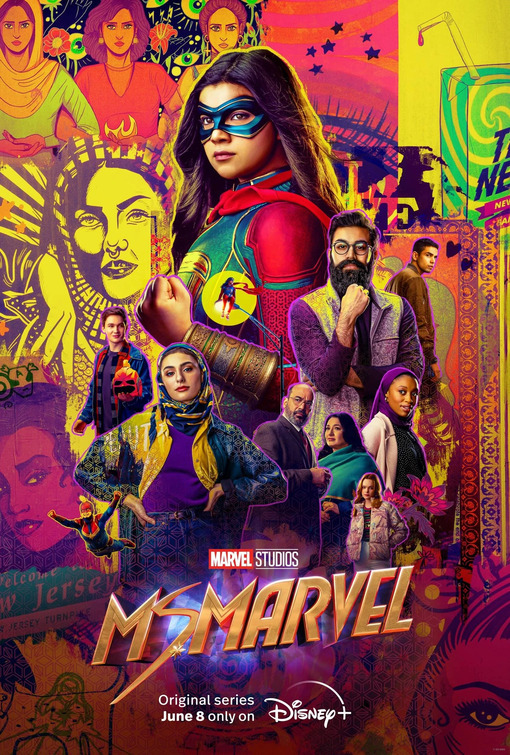
How do structural mythology, cultural studies, and cultural history reflect the series’ world and world-building around superheroes?
In the series Ms. Marvel, Kamala is a high school girl who one day acquires energy-based powers. The source of her powers comes from a bangle inherited from her grandmother who disappeared during the Partition of India. This bangle Kamala discovers in a box of her grandmother's belongings is later known to be a quantum band, that before this was only known to be heard of in myths and legends. This historical and mythological premise of the show dictates the origin of Kamala's powers and her path of discovery and growth as she develops and better understands her powers.
Additionally, Ms. Marvel incorporates cultural morals and identities into the superhero genre. Ms. Marvel allows for the depiction of South Asian cultures on screen which is pivotal as it is something that hasn't been seen as much previously, especially in superhero shows and movies. The series unapologetically showcases Kamala's Pakistani culture in a way that is intertwined with her life, family, community, relationships, and powers. This depiction allows viewers to broaden their understanding of what a superhero can look like. Furthermore, it showcases that one's culture doesn't need to be separated from other important aspects of their life, but rather greatly influences it.
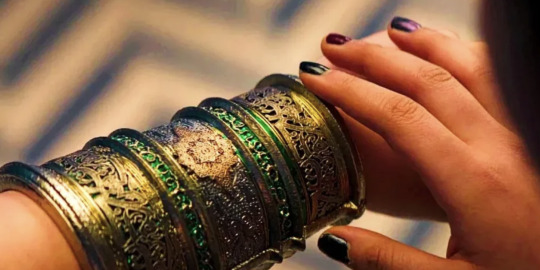
In what ways are the superheroes and their abilities informed by their racial, gender, sexual, and cultural identities?
Kamala idolizes Captain Marvel who fits the stereotypical American beauty standards of being a tall, white, blond, blue-eyed woman. Kamala on the other hand is shorter, younger, sturdier, and has brown eyes and skin. While their power gap primarily arises due to experience it is also important to consider these differences when exploring how they are portrayed and respected by their communities. Kamala dreams of being just like Captain Marvel, but as the show continues she learns to embrace the identities that individualize her while in action. Furthermore, Kamala’s costume design is greatly influenced by her cultural background and she uses traditional Indian jewelry to help control her powers. While she designs her costume through inspiration from Captain Marvel’s look, Kamala incorporates things from her background and identity to help personalize her costume. It is greatly modeled after traditional Indian attire and incorporates modestly following Islamic values and Haram. Kamala’s costume being able to be an outlet for self-expression acknowledges her identity while still being a powerful hero.
youtube
youtube
In what ways do costumes and concealing identities further separate the superheroes from normal society? How necessary is it for the superheroes to hide their true identities to successfully achieve their goals?
In general, costumes are helpful to protect themselves and their families. Additionally, since costumes conceal their identities it makes it so that others have no understanding of who they are. This makes it so the actual individual gets no recognition for the good, or bad, things that they do as it is only associated with their alter ego. In Ms. Marvel, even though Ms. Marvel becomes the talk of the town and receives a lot of attention, Kamala receives no clout for her heroic deeds. On the contrary, however, it does allow her to get away with doing things that she would otherwise get in trouble with as a teenager with protective parents. Despite this, Kamala’s costume allows for individuality which in turn doesn’t conceal her identity as well as many other superhero costumes do. In fact, in the show, her close friends and family eventually discover her true identity later even after she initially attempts to hide it from them.
How do the economic, political, and social events that occurred during the series’ creation and broadcast cultivate and inform the superheroes’ decisions and actions?
Kamala is highly influenced by her family and community in which both parties provide protection. As a Muslim superhero, Ms. Marvel receives backlash from a government agency that is portrayed as being Islamophobic and tries to identify her. This informs her decisions and actions as she has to protect herself from the challenges of being unfairly treated and villainized due to her religion and skin tone.
How do the superheroes question themselves, each other, and their obligations and duties to the people around them?
In the series, Kamala always compares herself with Captain Marvel who she idolizes and sees as perfect. Thus, when Kamala thinks of herself, she overanalyzes her own imperfections. When Kamala discovers her powers, she works towards perfecting her powers as she considers it her duty to use them for good. Additionally, Kamala wants to honor her family and community while using her powers responsibly. She has a desire to fulfill her destiny of becoming a great superhero, but this often goes against her parents' desires to keep her safe and not expose her to the evils of the world. This leads to tension between her shared responsibilities of protecting others while still trying to protect herself to fulfill her obligations of being a good superhero and a good daughter.
youtube
@theuncannyprofessoro
15 notes
·
View notes
Text
Did the real-life reception of the show reflect the commentary made in the show on having Sam Wilson succeed Steve Rogers as Captain America?
Falcon and the Winter Solider (2021)
youtube
"The Falcon and The Winter Soldier" picks up the narrative immediately after the events of "Avengers: Endgame." The series navigates the post-Captain America era, with Sam Wilson (Falcon) grappling with the decision of accepting or rejecting the iconic shield. Simultaneously, a new government-appointed Captain America, John Walker, enters the scene. Against the backdrop of global conspiracies involving the Flag Smashers and the mysterious Power Broker, the storyline weaves together the struggles of identity, legacy, and responsibility. Within this narrative, the series tackles themes of racism, socio-economic disparity, and the quest for justice, elevating it beyond the confines of traditional superhero storytelling.
How do structural mythology, cultural studies, and cultural history reflect the series’ world and world-building around superheroes?
Structurally, the series follows the archetypal hero's journey, exploring the burdens and responsibilities that come with wielding superhuman abilities, particularly in the context of the iconic Captain America shield. This mythological framework serves as a foundation for the characters' development and the overarching narrative.
In terms of cultural studies, the show delves into contemporary societal issues, addressing systemic racism, socio-economic disparities, and displacement. The decision-making around Sam Wilson's acceptance of the Captain America role reflects a nuanced exploration of racial identity and societal expectations, contributing to a broader discourse on representation within the superhero genre.
Cultural history is interwoven into the narrative, notably through the aftermath of significant events like the Blip. The series reflects on the impact of these events, shaping the characters' identities and motivations. By grounding the superhero narrative in historical context, it adds layers of complexity to the world-building, making it more reflective of real-world dynamics.
In what ways are the superheroes and their abilities informed by their racial, gender, sexual, and cultural identities?
The series places a magnifying glass on the racial identity of its lead character, Sam Wilson, as he grapples with the legacy of the Captain America shield. Sam's hesitation to assume the role immediately isn't solely rooted in self-doubt but reflects a profound awareness of the racial implications of becoming the symbol of American heroism. The show captures the struggle of a Black man reconciling with the expectations placed on him in a society that has historically excluded and marginalized people of color.
In what ways do costumes and concealing identities further separate the superheroes from normal society? How necessary is it for the superheroes to hide their true identities to successfully achieve their goals?
In "The Falcon and The Winter Soldier," costumes and concealed identities play an important role in delineating the boundary between superheroes and normal society. A prime example is Sam's adoption of the Captain America mantle. When he initially decides not to take up the shield, he grapples not only with the weight of the responsibility, but also with the racial implications of becoming the symbol of American heroism. The iconic Captain America costume, with its patriotic colors and distinctive shield, is not just a uniform; it carries profound symbolic weight. Sam's eventual acceptance of the costume is not just a personal decision, but a statement about the transformative power of symbols and the role costumes play in defining superhero identities.
Practical necessity comes to the forefront for the character of Karli, the leader of the Flag Smashers. Her adoption of a mask aligns with the group's anti-establishment stance, but it also serves the purpose of protecting her identity from their enemies.
The series also addresses the consequences of revealing identities. John Walker, the government-appointed Captain America, faces backlash when his identity is exposed after a controversial incident. The lack of anonymity intensifies the scrutiny on his actions, showcasing the vulnerability that comes with a public persona.
How do the economic, political, and social events that occurred during the series’ creation and broadcast cultivate and inform the superheroes’ decisions and actions?
"The Falcon and The Winter Soldier" unfolds against the backdrop of real-world events, resonating with the racial justice movements of its time. The series discusses police brutality, racial profiling, and the struggles of marginalized communities, drawing explicit parallels to the Black Lives Matter movement.
How do the superheroes question themselves, each other, and their obligations and duties to the people around them?
Throughout the show, Sam questions whether he, as a Black man, can truly embody the symbol of a nation that has historically marginalized people of color. Sam's introspection goes beyond the physical demands of heroism, extending into the realm of identity, representation, and personal sacrifice.
Bucky Barnes, the Winter Soldier, engages in a profound self-examination as he grapples with his dark past and seeks redemption. His internal conflict revolves around reconciling the actions he was forced to commit as a mind-controlled assassin.
20 notes
·
View notes
Text
Does Vought also resemble current huge capitalistic conglomerates e.g. Disney?
Superhero Roundtable
Gen V (2023)
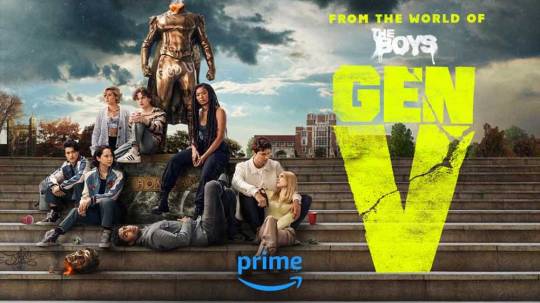
The series Gen V is a spin-off of The Boys series on Prime, it aired very recently with the season only wrapping up on November 3rd of this year. The show takes place in the same universe as The Boys and its timeline is meant to align and intersect a bit with the new season. Instead of focusing on the main adult superheros of the universe, Gen V chooses to center its narrative on the younger victims of compound V (Which is the drug people can take to potentially get powers). The show is set in a college that only ‘Supes’ can attend (think Sky High). There they are ranked and all aim for the number one spot and to be a part of the famous ‘7’ supe group. The show is similar to what I talked about in my Buffy roundtable but here demons are swapped with superpowers for adolescent woes metaphors.
How do structural mythology, cultural studies, and cultural history reflect the series?
As the show came out this year it's cultural studies and history is all very recent, and it specifically caters toward Gen Z. In doing so the cast is much more diverse than The Boys and earlier superhero shows. The main character is a young Black woman named Marie who’s love interest is a bigender Korean American who can shapeshift between two different genders of masculine and feminine. The friend group she also meets up with also consists of others diverse in background and ethnicity. The call for more diverse superheroes is definitely a product of more recent cultural values and changes, especially with younger people being the target demographic. The politics of the show also represent the recent political timeline with our generation's disappointment in the actions and lack of actions the government has taken on corruption with capitalism, climate change, etc . This can be seen with Vought International, the multibillion dollar conglomerate that founded the famous 7 and manages ‘supes’. The company also does entertainment, news, weapons, fast food chains etc. The corruption of the company and its supes, most notably its most powerful supe Homelander who’s villain arc mirrors Trump, really fits the current post Trump political climate. The structural mythology of supes in the show is interesting as well. Instead of the show having the classic Hero’s journey with its superheroes and their gaining of powers. The main characters of the show got their powers from their parents injecting them with Compund V so they could profit off of their abilities. The superpowers they have are often the root of their trauma. The main character, Marie, has blood controlling powers that manifested on her first period and led her to accidentally kill her parents in front of her sister. Overall, this pessimistic view of superheroes and their powers is really reflective of our current political and cultural landscape.
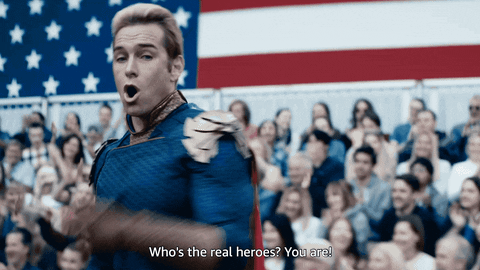
In what ways are the superheroes and their abilities informed by their racial, gender, sexual, and cultural identities?
One superhero that exemplifies the concept of their abilities being informed by their identities—specifically gender—is Jordan Li, the bigender Korean American who can shapeshift between two different genders of masculine and feminine that I previously mentioned. Through Jordan Li’s super powers the show is able to mythologize gender fluidity and identity struggles. In this clip, Jordan is talking to their parents who are upset that their developing powers gave them the ability to shift from a boy to a girl. Jordan has to explain that they are still themselves in both forms and have always been the same, but their father still disapproves.

In what ways do costumes and concealing identities further separate the superheroes from normal society? How necessary is it for the superheroes to hide their true identities to successfully achieve their goals?
In the Gen V the superheroes identities aren’t concealed from the public but they do have superhero personas that they are more known by in the public and media sphere. The celebrity-like status they have with their super personas is used to other them and commodify their powers to entertain others as a spectacle. One example of this is with the character Emma whose superpower is her ability to make herself change size. At school she is majoring in becoming a super influencer basically and goes by the persona ‘Little Cricket’ for her popular youtube channel. While her channel is popular we learn that it really is her mother wanting to profit off of her abilities and doesn’t care that she has to throw up and purge in order to change herself. Her power is also fetishized by a male classmate who wants her to get small while they are intimate. So in Gen V the creation of separate identities is not used to achieve their own personal goals but is instead taken advantage of by non-supes to capitalize off of.
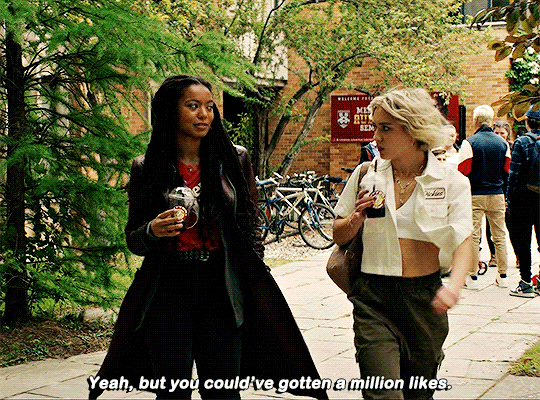
How do the economic, political, and social events that occurred during the series’ creation and broadcast cultivate and inform the superheroes’ decisions and actions?
In the series there is a very ‘us vs. them’ mentality between the supes and non-supes that is reminiscent of the current political climate. In episode 7 a senator comes to the school for an interview and it ends in a riot. The senator runs the Federal Bureau of Superhuman Affairs which seeks to monitor and investigate Supes and stop them from harming others. In the panel Senator Neuman is trying to pander to both sides, with boos and applause for each statement as the students are split between wanting to punish Supes like Homelander for killing innocent people or for thinking that not supporting him is Anti-super. As the episode description shows,
Calling all God U #Hometeamers! Today we’re protesting Socialist Victoria Neuman’s town hall on campus! Let’s show Neuman and her Supe-hating woke mob that we won’t put up with their anti-Superhero agenda! THEY WILL NOT CONTROL US! #MakeAmericaSuperAgain #SupeLivesMatter
The supe vs non-supe divide is very politicized with it mirroring liberal and conservative ideals of the spectrum. The situation is very polarizing and the “Supelivesmatter” crowd ends up disrupting the panel and it becomes very violent. The show is not very subtle with its mirroring of Blue Lives Matter and MAGA, especially with Homelander being a stand in for Trump. This is the central conflict between America’s general super population and their actions demonstrating the impact of our own political news cycle on the show.

How do the superheroes question themselves, each other, and their obligations and duties to the people around them?
In the show characters are constantly questioning intentions, who to trust, and what is right and wrong–especially within the supes and non supes dichotomy. The main characters are grappling with if the pain and violence that their powers have inflicted on others unintentionally are actually their fault and dealing with their guilt and self hatred for it at the same time.

This really leads to the central conflict of if their obligations are to use their powers to protect themselves or the non-supes that put them in the position of having these powers in the first place. The show is really complex in its portrayal of this as in the final scene of the show you are really left wondering what is the right thing to do alongside the characters as they decide who they should side with. Gen V is unique because while in The Boys the superheroes are more villainized but in Gen V it’s more unclear as we are able to see through following the adolescent super perspective it wasn't their fault. It is only at university that Marie and other students are able to begin to realize that the violence and trauma their powers have inflicted on their families and other non-supes is not their own but their parents' fault for injecting them with compound V in the first place.

The fact that their parents did in want of fame and fortune promised by Vought International, really shows that capitalism has been the real villain all along.
“Your parents shot you up with a dangerous drսg when you were a baby to make a buck off you. Don't spend a fսcking minute crying over them”

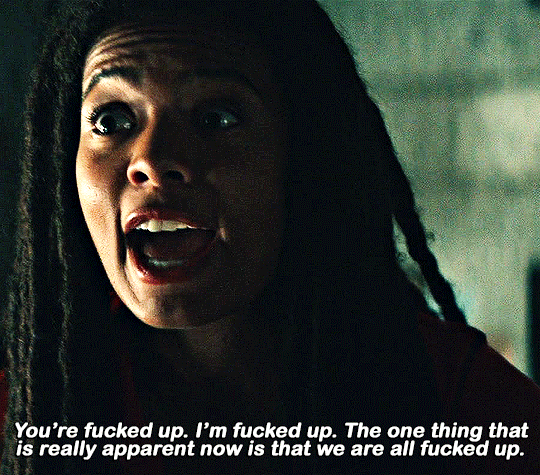
@theuncannyprofessoro
16 notes
·
View notes
Text
How much of a black-and-white/grey spectrum does the show implement with the morality of "superheroes"? Are they all just plain evil?
We Don't Need Another Superhero: The Boys (2018)
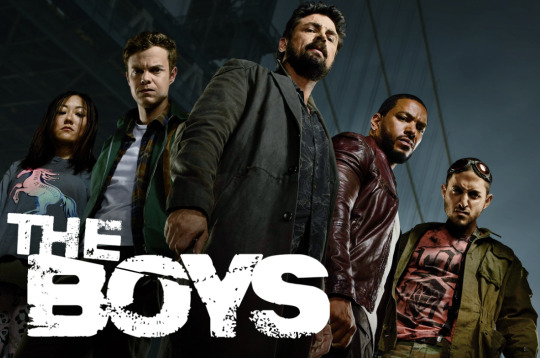
William’s assertion that TV Superheroes symbolize our ever changing “American values” is proven true by The Boys’ (2019) critical reflection of the our 21st century nation’s hierarchical distribution of economic, social, & political power, aggressive foreign policy/patriotism post 9/11, and represents the (much needed) beginnings of progressiveness through its rebellious protagonists. The show surrounds Starlight, the newest member of the Seven (America’s favorite Superheroes/“Supes” managed by Vought, an antagonistic, all-controlling company), who, after being assaulted by her childhood idol on the first night, quickly learns that the group’s heroic image is “written by the marketers.” She teams up with Hugh–our human protagonist whose fiance was murdered by a Supe–and his gang of similarly wronged (and vengeful) misfits to destroy the Seven, and eventually, Vought. The narrative frames Superheroes as the actual villains; Williams states that “with great power comes great responsibility,” but in the Boys’ speculative America, this statement is pretty unfortunate.
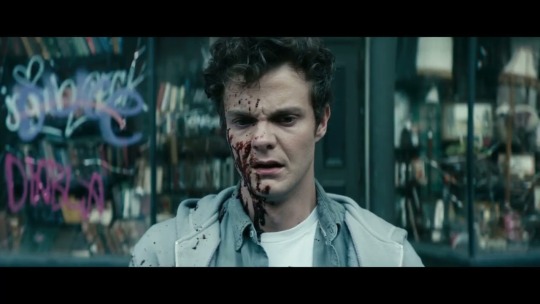
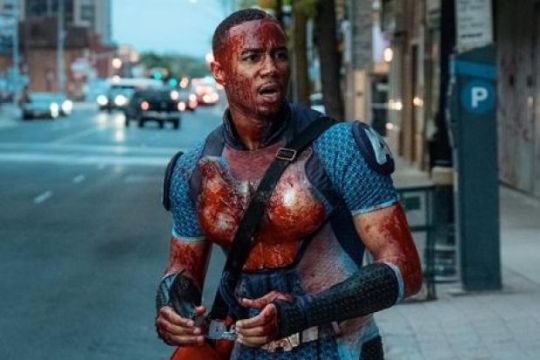
How do structural mythology, cultural studies, and cultural history reflect the series’ world and world-building around superheroes?
The Boys contradicts mythos of the intrinsically good Superhero by exploring the hierarchical, power-based, hegemonic underground world of the Supes, who are closer to flawed–rather than superior–humans. Homelander’s hatred of humans and the Deep’s array of sexual assaults contrasts with their publicly perfect (mythos-based) personas. In terms of cultural studies, the international influence of Vought and its Supes mirrors our unjust attribution of social power. Ezekiel–an antagonist Supe whose homophobic Catholicism contrasts with his secret homosexuality; S1 depicts him angelically floating above crowded young fans while preaching. His sex & drug-filled life is hidden from the naive public, reminding us to question the ideology presented by God-like figures in contemporary society. Superheroes’ mode of “action and conflict” is brutal, gory, in line with 21st century’s chaotic foreign policy. Well described its international standpoint as “America the Violent,” The Boys opens with A-Train literally running through Hugh’s fiance on the street, leaving the bloody protagonist to hold his girlfriend’s (cut-off) hands (the Nation, 2023). If that’s not enough, Homelander kills humans for fun. His destruction mirrors Trump’s reign–“critics say President Trump’s foreign policy has seriously undermined America’s world leadership” (the Hill). Luckily, the fight for progressiveness is represented by both Supes and humans.
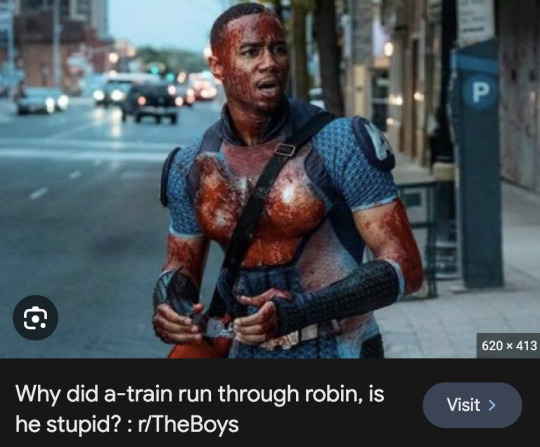
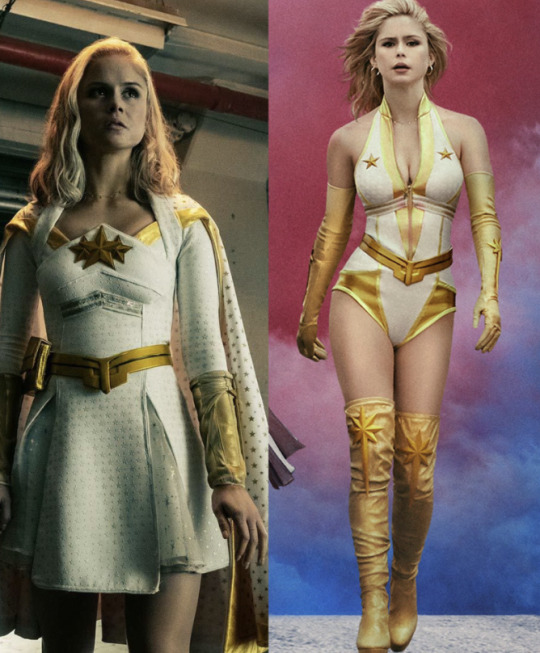
In what ways are the superheroes and their abilities informed by their racial, gender, sexual, and cultural identities?
Despite Vought’s public diversity, their performativity is evident in the structural, identity-related barriers that hinder all members of the Seven (except Homelander, whose straight white identity is, uncoincidentally, the face of America). Homelander’s role in Vought’s decisions (and national power) contrasts with the company’s disregard of A-Train, a Black member of the Seven. His requests–such as an apology from Superhero Blue Hawk (a stereotyping racist who curb-stomped a Black man)--are typically ignored despite his sudden importance for #BLM marketing. Still, A-Train eventually kills Blue Hawk, framing him as stronger than the white, hegemonic structure that attempts to define him. Starlight’s entrance into the celebrity-Superhero world illustrates the struggle of gender; soon after signing her, Vought changes Starlight’s modest costume to a skimpy bikini, threatening to fire her if she doesn’t cooperate. The following scene depicts her in the bikini, men yelling to “show her boobs” in front of her young, innocent fans; gendered sexualization is framed as a barrier, overshadowing her identity as a strong Superhero. Maeve’s bisexuality sheds light on the heteronormativity of the Supe system; after years of hiding her bisexuality, heteronormative Homelander finds out and publicly outs her (in angry jealousy) as a lesbian. Vought’s binary view of sexuality results in their manipulation of this outing as a way to ‘diversify’ and profit–Maeve is marketed as the new face of lesbianism, illustrating her difficulty presenting her true Superhero identity in this binary system. Kimiko–a victim of human trafficking–illustrates intersectionality as female, Japanese, and Super; her cultural difference from the show’s world is evident throughout Season 1, when the boys attempt to ‘figure her out,’ somewhat like an unknown concept. Kimiko’s empowerment in later seasons indicates her contradiction of the hysterical, alien “Female,” and rather frames intersectionality as part of her uniquely heightened strength.
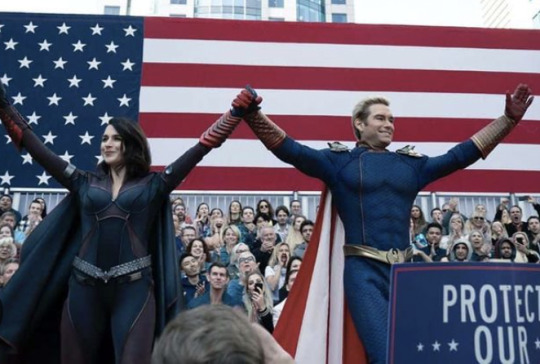
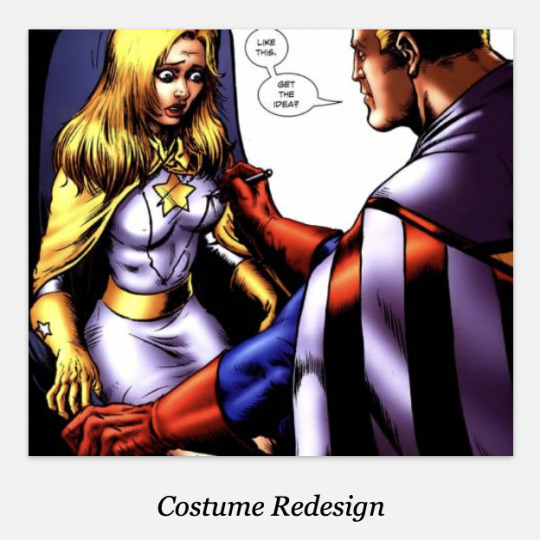
In what ways do costumes and concealing identities further separate the superheroes from normal society? How necessary is it for the superheroes to hide their true identities to successfully achieve their goals?
Costume reflects the humanity (or lack thereof) of Superheroes; Homelander is never shown without his costume on, which alludes to his lack of humanity and hatred of non-Supes. The costume represents his “real” persona while his humanity is “the facade” (1344). His “true,” villainous identity must thus be hidden in order to win the public’s affection and achieve his power-hungry goals. On the other hand, Starlight avoids costume and is framed as the most human Supe. In the first few episodes, we learn about her background through moments with Annie–her real name–while she sits at the bar, bowls, or walks through the park in ‘normal’ clothes. Still, she must hide her true identity to satisfy Vought’s hegemonic idea of success. Kimiko is never seen in costume, and is framed as the sweetest and purest Supe despite her introduction as the most alien. Her lack of interaction with the roles created by Vought (and the costumes that realize them) results in her formation of a singular identity rather than a “super” vs “normal” self like the Seven, and quickly settles into her Superhero strength.
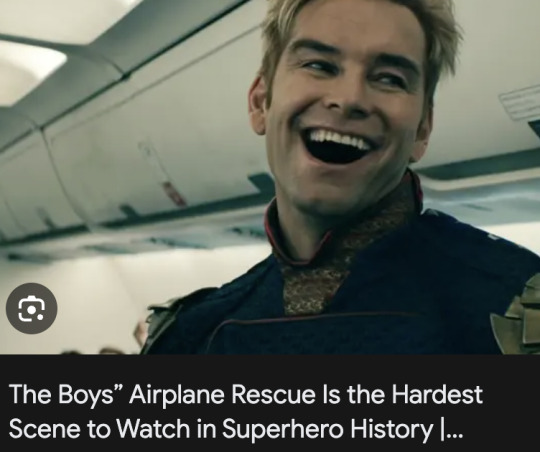
How do the economic, political, and social events that occurred during the series’ creation and broadcast cultivate and inform the superheroes’ decisions and actions?
Superheroes’ paths are informed by economic (human trafficking), social (#MeToo, BLM), and political (terrorism, 9/11) events. Kimiko–a Japanese trafficking victim–fell into a vat of Compound V (Vought’s superhero serum) and gained unusually intense Super-strength. The economic value placed on her extreme strength results in her imprisonment as a lab rat and trafficking into the U.S. Her origin story addresses the nation’s concerning economic flow from human trafficking, pictured in relation to Compound V through Vought’s transnational trade. The #MeToo social movement affects Starlight after her sexual assault in by the Deep, a member of the Seven (E1). While the shows creators considered “behind-the-scenes” revenge narrative, they constructed Starlight’s public revenge with references to #MeToo after the movement’s coincidentally timed real-world emergence; the historical social movement shaped Starlight’s story (the Nation). “Flight 37”--a crashed plane hijacked by terrorists–is likely a political reference to 9/11. When Homelander tries–but fails–to save the plane, he simply leaves everyone to die and pretends he was never there. When the tragedy goes public, he expresses his sorrow through fake tears and a politically oriented speech; he demands the American need for real protection, specifically, Supes in the military. Homelander’s manipulation of a national tragedy to assist his right-wing agenda mirrors 21st century politics under Trump’s guidance.

How do the superheroes question themselves, each other, and their obligations and duties to the people around them?
Stan Edgar (a Vought executive) leads Homelander to question his own capability despite the Supe’s undefeated physical superiority. Edgar’s statement that Homelander is “not a God,” but “simply… bad product” results in Homelander’s atypically poor performance in a fight with Soldier Boy in the following scene (S3, the most important fight of the show). The physical manifestation of Homelander’s insecurity sheds a rare light on his humanity. His creation of an abusive workplace environment means that none of the Supes trust him, especially Maeve, as their past/media-friendly romance gives her more insight than the others. She consistently questions his intentions and thus keeps a poker face, smiling to avoid his (physically threatening) temper; her distrust shows as soon as Homelander leaves and a hidden fear replaces her fake smile. Starlight similarly distrusts and questions her obligation to remain in the Seven, and only stays to please her selfish mother. The eventual discovery that her mother selfishly injected baby Starlight with Compound V dissolves the Supe’s trust of and obligation to her mom; Starlight remains in the Seven, but for moral, personally driven reasons.
@theuncannyprofessoro #oxyspeculativetv
17 notes
·
View notes
Text
How does the show handle Egyptian mythology and imagery with cultural studies and beliefs of American superhero worlds/genres
Panel Presentation: Moon Knight
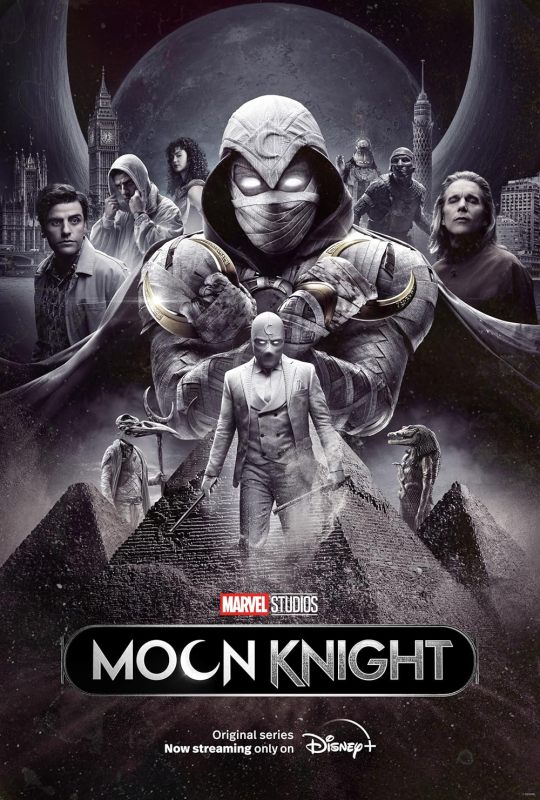
Moon Knight centers around Steven Grant, an unassuming employee at a museum gift shop, whose life is disrupted by episodes of memory loss and recollections of an alternate existence. Uncovering the presence of dissociative identity disorder within himself, Steven realizes that he coexists in the same body with the mercenary Marc Spector. As adversaries of Steven/Marc close in on them, the duo must grapple with their intricate identities while being entangled in a perilous enigma involving the formidable gods of Egypt. Like the narrative of Justice League analyzed by Kevin D Williams, Steven Grant experiences violence and struggle that impacts his own mental health.
How do structural mythology, cultural studies, and cultural history reflect the series’ world and world-building around superheroes?Moon Knight intricately navigates the multifaceted landscape of superhero storytelling by incorporating a rich tapestry of structural mythology and cultural exploration. The portrayal of Marc Spector's dissociative identity disorder adds a layer of psychological complexity to the character, challenging traditional superhero archetypes. The series deftly delves into Egyptian mythology, weaving a narrative around gods like Khonshu and Ammit, thereby expanding the cultural dimensions of the Marvel Universe. The inclusion of characters like Layla El-Faouly contributes to a more nuanced representation, avoiding clichéd racial tropes and broadening the spectrum of identities. By hiring Egyptian director Mohamed Diab, the show not only authentically embraces its cultural backdrop but also fosters diversity behind the camera. Moon Knight emerges as a sophisticated and culturally resonant contribution to the evolving landscape of superhero narratives.
2. In what ways are the superheroes and their abilities informed by their racial, gender, sexual, and cultural identities?
Superheroes and their abilities are deeply influenced by their cultural and identity backgrounds, offering a nuanced exploration of diverse perspectives. Moon Knight, for instance, introduces layers of cultural complexity by delving into Egyptian mythology and presenting characters with multifaceted identities. The show's portrayal of mental health issues further adds depth to the narrative, contributing to a broader conversation about the intersectionality of identity within the superhero genre. While normally superhero’s abilities are formed or enhanced by solely the supernatural, Moonknight’s abilities take aspects from his dissociative identity disorder and form distinct characters.
3. In what ways do costumes and concealing identities further separate the superheroes from normal society? How necessary is it for the superheroes to hide their true identities to successfully achieve their goals?
In "Moon Knight," costumes and concealed identities play a vital role in delineating the titular hero from normal society. The character of Marc Spector/Moon Knight grapples with dissociative identity disorder, which adds layers of complexity to his personas. The various costumes represent distinct facets of his psyche, blurring the lines between reality and the supernatural. This intricate dance between identities not only mirrors the broader theme of duality prevalent in superhero narratives but also underscores the character's internal struggles. In the second episode, Steven is asked to manifest his suit in order to fight a creature, but the character talking to him knows Marc - an alternate identity completely different from steven. Steven forms an all-white three-piece suit, not understanding what she means. This departure from the conventional superhero costume aligns with the series' thematic focus on internal conflicts and emotions externalized through these superhuman personas. Steven's unique vision of a "super suit" reflects his unfamiliarity with traditional superhero tropes, offering a distinct perspective on the concept.
4. How do the economic, political, and social events that occurred during the series’ creation and broadcast cultivate and inform the superheroes’ decisions and actions?
In the backdrop of "Moon Knight," the socio-political landscape of the last decade likely influenced the series, fostering a more progressive tone in superhero narratives. Especially with the rise in popularity with superhero franchises, there seems to be an increased amount of representation in superheroes. Many modern adaptations of comic superheroes take liberty and alter the story and characters in order to be more inclusive and appeal to the modern audience. Moon Knight seems to foster healthy conversations about mental illness and doesn’t treat it like a foreign and unnatural thing. The main identity of Steven is also not the stereotypical macho superhero, and he has to grow into this new unfamiliar character. Decisions and reactions to things mirror his timidness (at least initially), offering a new and refreshing perspective on superhero personas.
5. How do the superheroes question themselves, each other, and their obligations and duties to the people around them?
Steven’s internal conflicts, mirrored in the manifestation of different personas like Mr. Knight, illustrate the complexity of questioning oneself and grappling with duty. Steven's struggles go beyond conventional superhero tropes, incorporating personal identity, psychological battles, and a unique interpretation of what being a hero means. In the first episode, Steven is manifested by an ancient Egyptian god, but struggles to grapple with the alternate identity that becomes present. A domming voice commands him to do things, even when Steven as a person does not. His body becomes a sort of puppet to this entity and gradually has to submit to his demands. He is even transparent to his coworker about a fight he had with a creature overnight at the museum, trying to explain how insane of an experience it was. This diverts from traditional superhero inceptions, where they must keep their powers and identities secret. The show's exploration of Steven's internal conflicts and obligations contributes to the broader trend in superhero storytelling, emphasizing the psychological and moral dimensions that enrich the character and resonate with audiences on a deeper level.
@theuncannyprofessoro
16 notes
·
View notes
Text
Does Kaidou resemble any cultural beliefs that audiences have of the superhero genre?
The Disastrous Life of Saiki K. - Superhero Roundtable
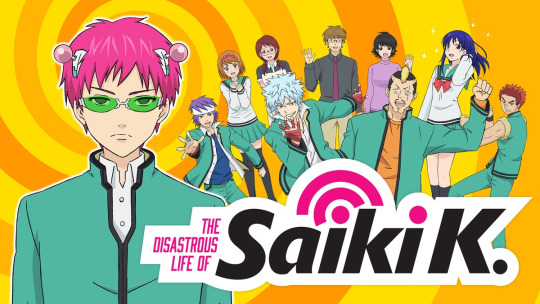
How do structural mythology, cultural studies, and cultural history reflect the series’ world and world-building around superheroes?
The Disastrous Life of Saiki K centers on the titular character, Saiki K, a highschool student with Superman-esque levels of psychic power. He has trademark pink hair and must wear green glasses and antennae in order to limit his powers. Saiki, as one of the only actual psychic characters in the anime, actually doesn’t want to solve problems, or help anyone with his powers, and most of the show he uses his powers to minimize attention and keep to himself. His only really widespread use of power was changing everyone in the world’s hair color to also be colorful so that he doesn’t stand out as much. In direct opposition to Saiki’s nonexistent need for attention and immense psychic power, his classmate Kaidou, has no power whatever but claims to be The Jet-Black Wings, the only person standing against The Dark Reunion, an evil organization running the world behind the scenes. This is played for satire as Kaidou loudly brags about being the Jet-Black Wings and blames every mishap on the Dark Reunion, wears red bandages on his arms to “control his power,” and a dramatic action song “Judgement Knights of Thunder” plays everytime he does anything.
youtube
Saiki K is a comedy anime satirizing the idea of a “superhero” through Saiki K, who kind of sucks and doesn’t care that much about other people, but even in using his powers selfishly, ultimately helps the people around him. This show challenges the idea that superheroes would necessarily swing to complete good or complete evil, and makes fun of those ideas in the example of satirizing binary thinking through Kaidou’s fake enemy, The Dark Reunion. Although the show begins with Saiki K doing everything he can to avoid attention and making friends, he warms up to his classmates over the show and uses his powers for their benefit, even as he convinces himself he’s just trying to help himself.
The origination of manga in Japan was influenced by the globalization of American comics, including superhero comics, brought during WWII. Interestingly, as members of the Axis Powers, Japan and Japanese characters were featured in American superhero comics as enemies to the nation, often depicted as racist stereotypes for wartime propaganda. On an international scale, superheroes are associated with the US, as a national export and national representation of American might and power. This can be seen in superhero anime like My Hero Academia, where All Might represents the All-American superhero figure. Shows like Saiki K and Mob Psycho 100 have superhero-like characters and themes but distance themselves from calling them that, positioning themselves as psychics rather than superheroes.
In what ways are the superheroes and their abilities informed by their racial, gender, sexual, and cultural identities?
Saiki K definitely participates in the de-racialization of characters as Will Bridges spoke to in “The Past Tense and the Future Perfect,” which we read for Cowboy Bebop. All of the characters are assumed to be Japanese, and are very homogeneous in appearance, save Nendo, whose butt-chin and weird mohawk are played for laughs. In many ways, Saiki represents the ultimate hegemonic male character who is conventionally attractive, cishet, middle class, and extremely able bodied. The only way that Saiki represents “other” could be through his lack of romantic or sexual interest in the show, much to the chagrin of Kokomi, the self proclaimed queen of the school, who appears with a halo of light around her at all times and has caused multiple stampedes of men chasing after her. The character Kaidou, who isn’t very popular with his classmates (somewhat because he always talks about the Dark Reunion), could be acting out social rejection through his fixation on being a superhero fighting evil, above the social dynamics of highschool.
In what ways do costumes and concealing identities further separate the superheroes from normal society? How necessary is it for the superheroes to hide their true identities to successfully achieve their goals?
For Saiki, hiding his identity is his goal. To this end, he has changed everyone’s hair in the entire world to be colorful so that he doesn’t stand out. When the school has a sports test in gym class, Saiki has to tone down his supernatural speed and strength to blend in, including teleporting a ball back when he throws it so far that it can’t be seen, and squeezing a grip strength monitor so hard that that needle goes all the way around and it looks like he has an average score. For many superheroes, putting on a costume/disguise is necessary to carry out their goals, but for Saiki, his physical appearance is connected to his supernatural abilities, and the antennae and glasses he wears serve not to express his powers or his superhero role, but rather to minimize and control them.
How do the economic, political, and social events that occurred during the series’ creation and broadcast cultivate and inform the superheroes’ decisions and actions?
The Disastrous Life of Saiki K first appeared as one-shot manga chapters published from 2012-2011, then serialized in Weekly Shonen Jump from 2012-2018. The anime based off of this manga was aired from 2016-2018. I think Saiki K intentionally builds off of the context of preexisting superhero media to satirize it, questioning the characterization of other characters with superpowers as good and selfless or evil and self-serving- Saiki is literally just some guy and he doesn’t feel any pressure to use his powers for anyone. The anime creates a depoliticized superhero- he isn’t connected to any hero organizations or governments, he doesn’t have any enemies. He is so depoliticized and inactive as a superhero figure that his morals swing all the way around into questionable because he is so powerful, and could solve so many problems, but only changed everyone’s hair.
How do the superheroes question themselves, each other, and their obligations and duties to the people around them?
Saiki K as a show challenges the superhero trope of questioning their purpose, sense of self and obligation to others by making Saiki antisocial and feel pretty neutrally about everyone besides himself. He always ends up helping the people around him, even when he doesn’t mean to, often doing so because it’s the easiest way to avoid being exposed, or not taking action will negatively impact him in some way. In one episode, he watches a magician on TV being locked in a box, and when it seems like he won’t be able to escape in time, Saiki teleports onto the set to save him. He does this in order to save the magician from a deadly incident which could potentially delay the rest of the tv channel, including Saiki’s favorite mystery show that after the magic show. He does help people, but his obligation is (allegedly) to himself first.
@theuncannyprofessoro
21 notes
·
View notes
Text
Superhero Roundtable: Invincible
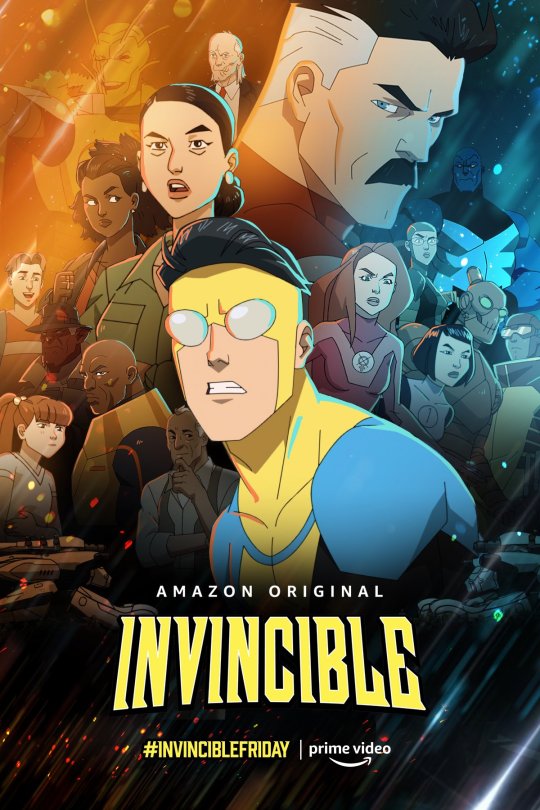
How do structural mythology, cultural studies, and cultural history reflect the series’ world and world-building around superheroes?
Invincible, much like many modern iterations of the “Capepunk” superhero genre that explores superheroism in a “realistic” manner accompanied by dark comedy and gruesome conflicts, offers commentary and its own unique premise on the cultural studies, cultural history, and structural mythology especially. The structural mythology of the show that initially borrows and parodies the structural mythologies of shows like The Justice League (2001) constantly explores what it means to be a hero through the main character, Mark Grayson. The 17-year-old half-human-half-Viltrumite high school student grapples with not just having to learn how to use his new powers, but also what being a superhero means, a concept that Mark struggles with throughout his entire career. A modest example of this is how Mark dubs his superhero alter-ego as “Invincible”, yet throughout the series, he is constantly beaten to near death and loses many major conflicts. Additionally, his father, otherwise known as Omni-man, someone whom Mark initially looks up to and models his superhero identity and perspective after, reveals to Mark that he comes from an alien race whose purpose is to conquer the universe and nearly kills Mark after Mark’s refusal to join in his father’s conquest. This is one of the most pivotal events in the series, as not only did it result in the death of thousands of people, but also is the beginning of the deconstruction of the illustrious image superheroes held and greatly influenced Mark’s career as a superhero.
youtube
The media of Invincible, which includes both the show and the graphic novel from which the show is adapted, greatly reflects cultural beliefs in their audience, more so in the comics, and adds onto these shaped beliefs. Apart from the show bolstering a wide array of superheroes from many different races and ethnicities, Invincible adds to the cultural view that anyone can wear the mask, a view famously explored through Spider-man media. Superhero monikers in the world of Invincible, primarily in the comics, are interchanged and evolved upon e.g. numerous people taking on variations of Omni-man’s identity and a few characters temporarily and permanently stepping in as Invincible with their own perspectives on what that position means.
The comic run of Invincible spans from 2003 to 2018, meaning there is a large element of cultural history that each major arc of the comic run is influenced by, however, the current run of the show makes some attempt to modernize some of the cultural history elements. One that particularly jumps out is the change in values of broadcasting and information exchange and how that has played a part in the growing caution and distrust for authoritative bodies, namely the U.S. government, among the younger generation. In some scenes in the show, as Mark is starting to develop agency in being a superhero, he has numerous arguments with Cecil Stedman, the government agent in charge of the Global Defense Agency, and even defies orders that Cecil gives him in acts of both rebellion and growth in his own ideologies on ‘superheroing’.
In what ways are the superheroes and their abilities informed by their racial, gender, sexual, and cultural identities?
In many cases, superheroes in Invincible are inspired by already existing superhero entities of both Marvel and DC with a range of alterations, some of which are informed by their racial, gender, sexual, and cultural identities. Both Mark and his father Nolan exhibit powers popularized by DC’s Superman that also similarly stem from their cultural identity as aliens, namely, Viltrumites from the planet Viltrum. Though not explicitly explored in the early stages of Mark’s career, his Asian identity also plays a role in his superhero identity. Many male characters seemingly naturally have some degree of increased physical strength and durability as part of their abilities with very few exceptions like Rex-Splode whose ability is able to create explosions by charging molecules to an unstable level of power. Most female superheroes exhibit abilities that aren’t necessarily akin to physical strength or explosiveness and more so some form of manipulation of matter, with very specific exceptions in characters like Monster Girl who shares similarities to Marvel’s Hulk in that she can transform into a large monster with supernatural strength, durability and healing, and War Woman who bares similarity to DC’s Wonder Woman in numerous ways, including her supernatural strength, speed, and durability
youtube
The show also shamelessly plays into the trope of having black male characters have superstrength and/or supernatural durability, as there are numerous black male characters, both heroes and villains, who have almost the exact same abilities with the exception of characters like Darkwing, the Batman-inspired superhero.
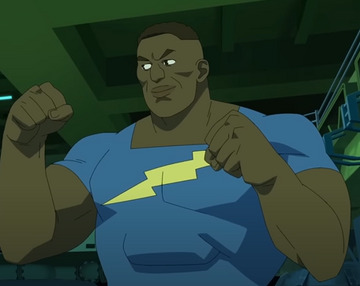
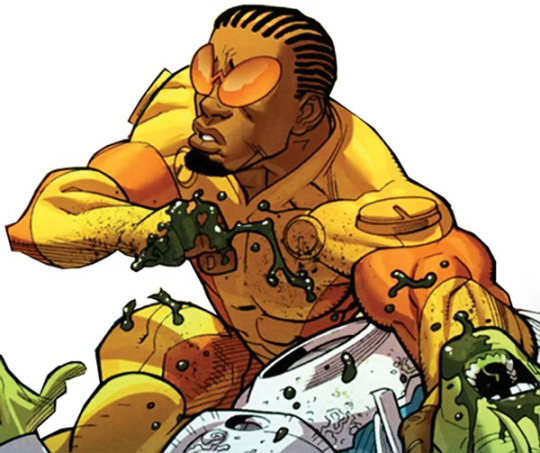

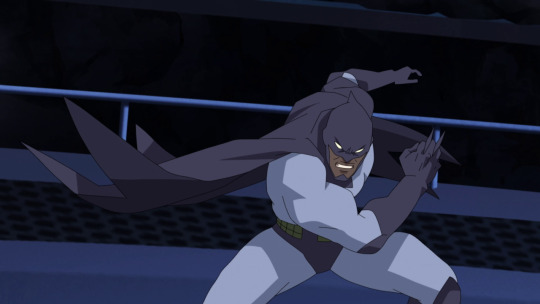
In what ways do costumes and concealing identities further separate the superheroes from normal society? How necessary is it for the superheroes to hide their true identities to successfully achieve their goals?
The show takes some time to explore the process of how superheroes pick their costumes and how they choose to have their identities displayed, such as hiding one of their identities or making attempts to separate them.
A somewhat common trend among some superheroes of the world, usually superheroes who have had experience in the careers or are generally older, is that they don’t wear a mask or any sort of garment that could skewer their identity, which makes a lot of sense for superheroes who don’t have separate identities in their day-to-day lives, but for characters like Omni-man/Nolan Gray and Atom Eve/Samantha Eve Wilkins, one of Mark’s friends and allies, they’re still able to hide and separate their identities without using a mask of some sort. This isn’t quite successful for Eve as Mark is able to recognize her at school after encountering her as her superhero counterpart earlier, and she offers an explanation that most people don’t expect someone they know to be a superhero, a very Hannah Montana situation that mostly works. Mark, however, has a number of reasons as to why he has to wear a mask, especially for the safety of his friends and family, as there are numerous cases in the comics where villains exploit his identity as well as his ties to his Father.
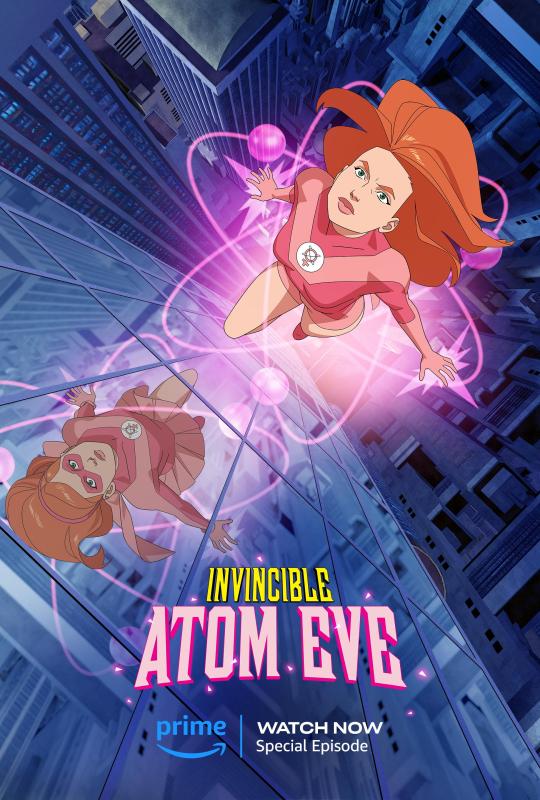
The costume designs also play a part in separating the superheroes from society and are explicitly described as symbols. When he starts, Mark builds his costume with the notable goggles and bandana to hide his identity. He later visits Art Rosenbaum, a suit tailor who designs many of the costumes of the show, and we see him create Invincible’s suit and mask that he dawns for most of his career that helps hide his identity as Mark Grayson (an important detail that will be explored quite soon in the series). When picking a suit design with Art, Mark states that he doesn’t like the orange and yellow suit designs and wants something “more iconic” (hence the yellow ‘I’ in the middle of his suit). This reflects both Mark’s understanding of the superhero identity that is modeled greatly after his father who dawns an ‘iconic’ white and red suit with the letter ‘O’ on it, a symbol, as Omni-man describes it, and the design of other superheroes entities of the time that dawned sleek black lines and colors that accompanied whatever other color scheme the superhero wore.
youtube
How do the economic, political, and social events that occurred during the series’ creation and broadcast cultivate and inform the superheroes’ decisions and actions?
The Invincible comics began its run in 2003, meaning some of the comic elements and stories may have been influenced by the period of time in which there was a heavy focus on the United States combatting terrorism following the events of 9/11, as many “alien threats” dealt with by the superheroes resemble this period. Sam Raimi’s Spider-Man (2002) also came out a year prior and is heralded as a large influence in comic book superheroes, most likely also being an influence in the creation of Invincible as they share very many similar elements (and even have various comic runs where both characters crossover to work alongside each other and are drawn by the same artist).
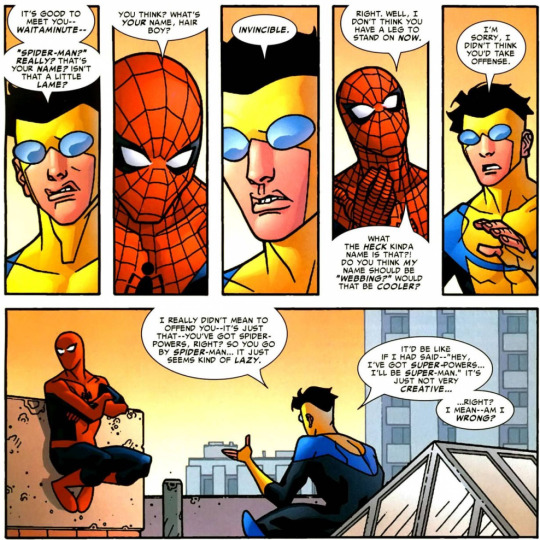
Nonetheless, the T.V. show that’s been broadcasting since 2021 very much attempts to modernize the story, and we see elements of more transparent Government involvement (or rather more exposure into the credibility of the Government) following major events such as Trump’s impeachment. Additionally, in recent years there has been general dialogue and questioning over the State following more and more largely broadcasted and empowering social justice movements and mass protests in recent years (e.g. the Black Lives Matter movement) that have worked to counter a lot of authoritative policies as well as deconstruct prevailing social constructs. In the show, this can be reflected by how Invincible (and several superhero characters) begins to make more of his own decisions instead of simply following orders given to him by Cecil, as well as a general distrust for Government authorities by the general public due to either their reliance on Superheroes and their continuous exploitation of people, both superheroes and non-superheroes.
How do the superheroes question themselves, each other, and their obligations and duties to the people around them?
Mark especially questions his role and obligation as Invincible as his plate grows larger, takes on more responsibilities and constantly has his beliefs toyed with. Growing up with a father as a superhero, being a superhero just like him had been Mark’s dream for 17 years. However, after having his whole world shattered when his father revealed himself to be a world conqueror playing “superhero” and “family man” as a means to accomplish his goal of conquering Earth, killing the most powerful superheroes and thousands of civilians due to Mark refusing to join in the conquest, Mark begins the continuous journey of questioning his role and responsibility as a superhero, often fearing he would turn out like his father and constantly blames himself for the destruction Omni-man/Nolan caused. Even in the second episode, we see Invincible learn the nuances and difficulties of superhero work when he causes the death of an Old lady while trying to evacuate her from an alien invasion.
youtube
youtube
A common theme in the show is the irony of Mark’s superhero name, Invincible, and how he is often going up against threats that are a lot more powerful than him and he repeatedly gets beat up and loses his battles. This takes a toll on Mark, causing him to question his abilities more often than not, as well as those close to him e.g. his mother. It also plays into the theme of growing up and independence and all the challenges that come along with it.
youtube
Atom Eve also goes through her own journey of establishing her obligation and duties as a superhero, as she comes to the realization that her abilities (the power to see and manipulate matter at subatomic levels) could be used for more humanitarian purposes like solving world hunger and building homes rather than being reduced to violence in the form of crime fighting. She leaves her superhero team in order to pursue this goal, which she learns comes with its own challenges that cause her to question whether or not she’s doing the right thing.
youtube
Our season 1 antagonist, Omni-man, has his own journey of questioning himself and his obligation as a superhero. Initially, his militaristic, planet-conquest mindset that is instilled in Viltrumite culture is conflicted when he comes to Earth and learns about humanity and societies on Earth, developing an obligation to protect the planet, even if he planned to conquer it in the future. Even after revealing his goal was to “breed” a suitor, a.k.a Mark, that could help him on his conquest, he is unable to follow through because he’s overcome with emotion and memories of his time on Earth while nearly killing his son. In the 4th episode of the 2nd season, Omni-man shares a vulnerable moment with Mark/Invincible where he talks about how he doesn’t understand why he cares for and feels obligated to protect a “weak” alien species, why he feels like this should be his purpose instead of the Viltrumite conquest, and why death and the guilt of his actions suddenly begins to weigh on him for the first time in his life. The episode ends with Omni-man fighting his ex-comrades to protect an alien planet alongside his son, completely showing an overhaul in his initial ideologies, and is prepared to die for the Thraxan alien species.

@theuncannyprofessoro
21 notes
·
View notes
Text
This is a very insightful analysis of both texts. Do you think that the either text attaches moral value to the disruption of established norms, whether that's in the field of science or international relations?
Three-body response
In episode 1 of "Three-Body" (2023), the mysterious woman's delivery of particle accelerator results to Prof. Munphy, preceding his suicide, is a pivotal scene that aligns with Stephen Benedict Dyson's analysis in "Images of International Politics in Chinese Science Fiction." Dyson argues that science fiction reflects known human relations and constructs new realities, influencing the audience's perceptions. The scene resonates with Waltz's three images of international relations, particularly the "dynamics of conflict."
The mysterious woman's actions introduce an element of external influence and manipulation reminiscent of international power dynamics. The suicide of Prof. Munphy, a leading scientist, echoes the idea that "physics doesn't exist anymore," linking to the deaths of other physicists in The Frontiers of Science. This phrase becomes a common thread, suggesting a shared disruption in the understanding of fundamental principles, mirroring the destabilizing impact of international conflicts on established norms.
Dyson's analysis enhances our formal understanding of the scene by providing a framework to interpret the broader implications. The intrusion of external forces into the scientific realm aligns with the way international relations can disrupt established norms and paradigms. The convergence of Dyson's analysis with the formal aspects of the episode deepens our appreciation of the narrative's geopolitical undertones and the intricate interplay between science fiction and real-world power dynamics.
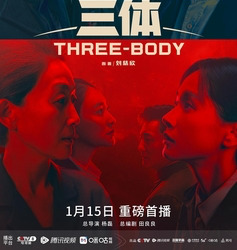
@theuncannyprofessoro
4 notes
·
View notes